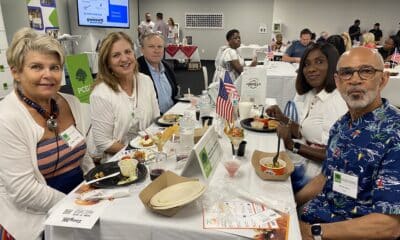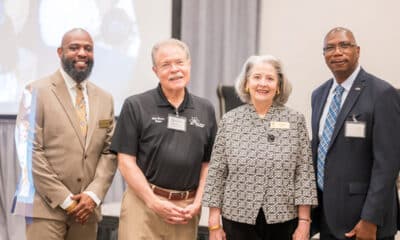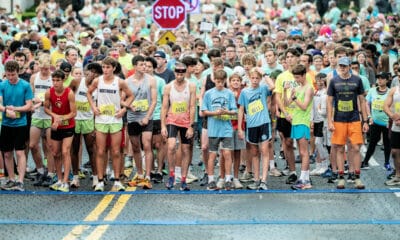Arts & Literature
Local Award-Winning Fantasy Author Ellie Raine Talks About Writing
Published
2 years agoon
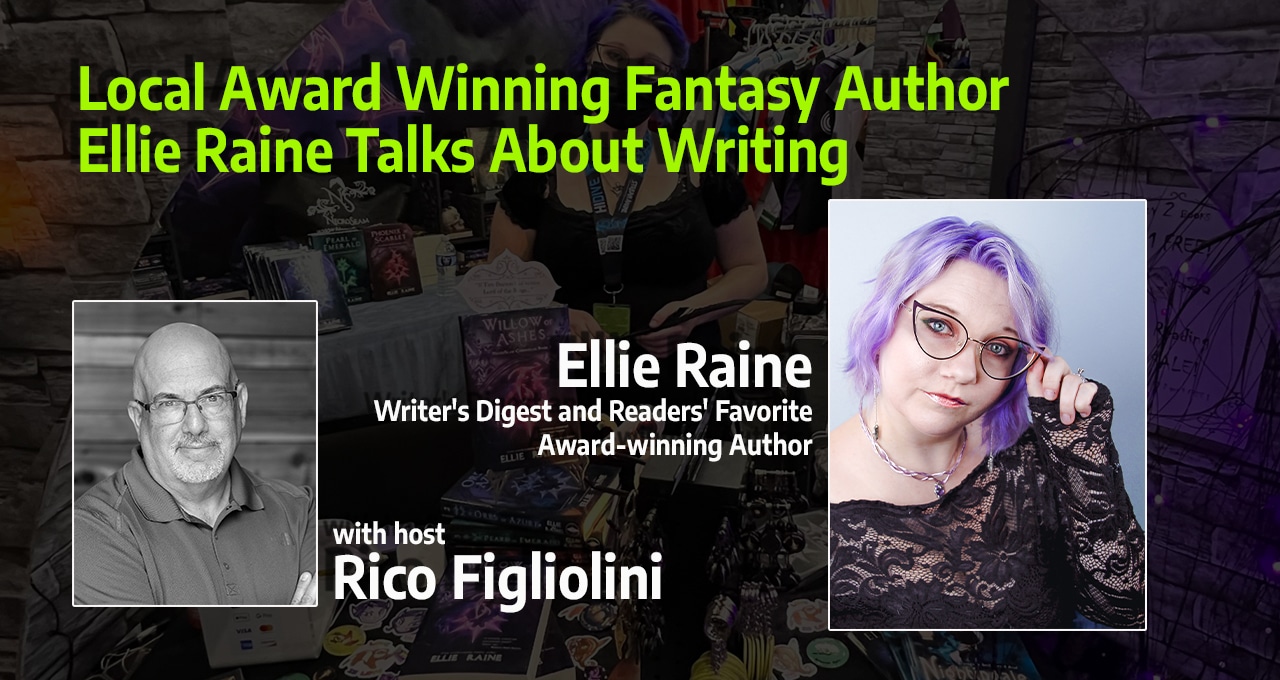
Ellie Raine is the award-winning author of the Adventure Fantasy series “The NecroSeam Chronicles.” Raine grew up in a family of book lovers, comic readers, and video gamers in the suburbs of Georgia and lives in Peachtree Corners where she attended Norcross High School.
In addition to writing, she has designed and created merchandise, art, and music related to her amazing fantasy series.
We talk about how she started, what inspired her and how she grew her craft and readership.
Resources:
Ellie Raine’s Website: https://www.ellieraine.com
Necroseam Website: https://www.necroseam.com
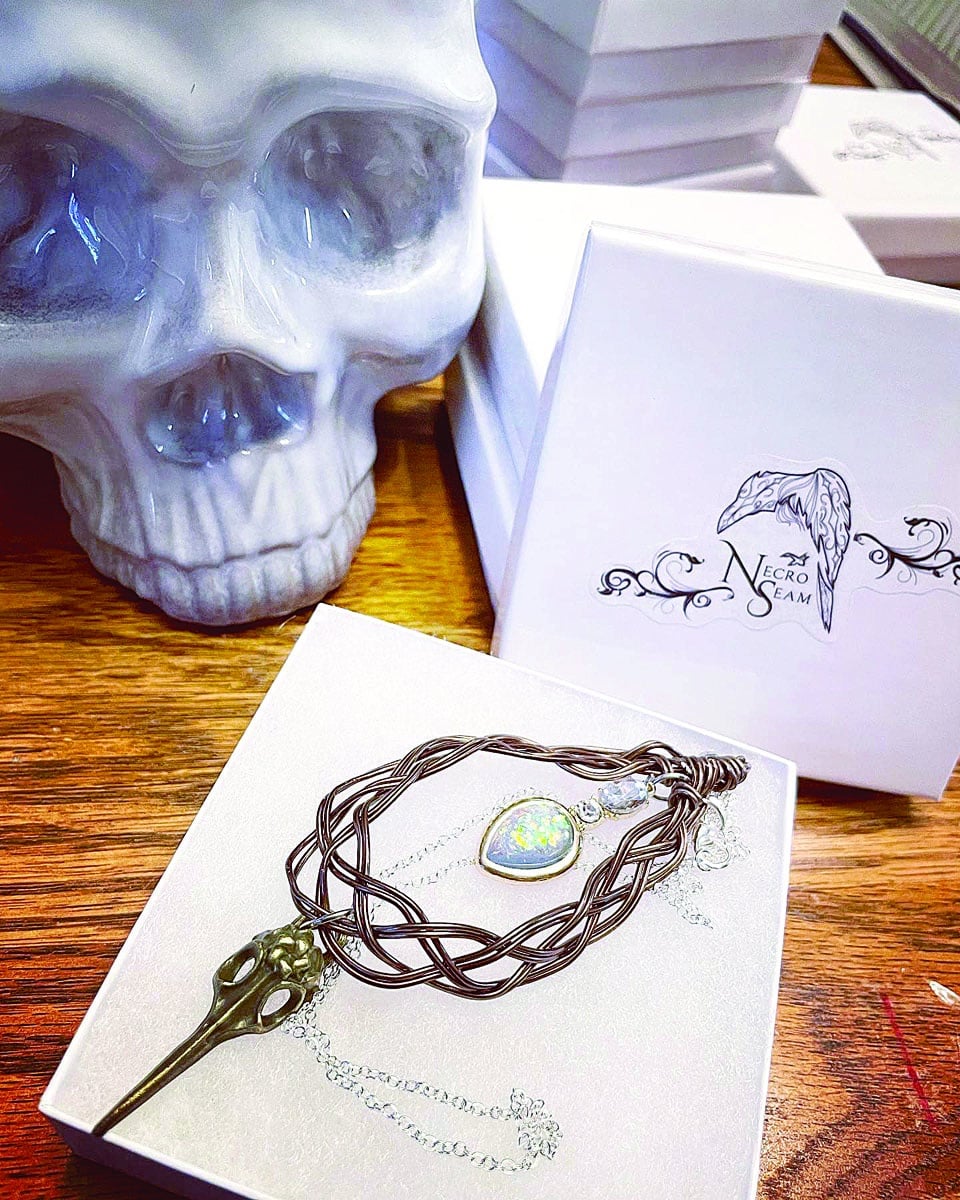
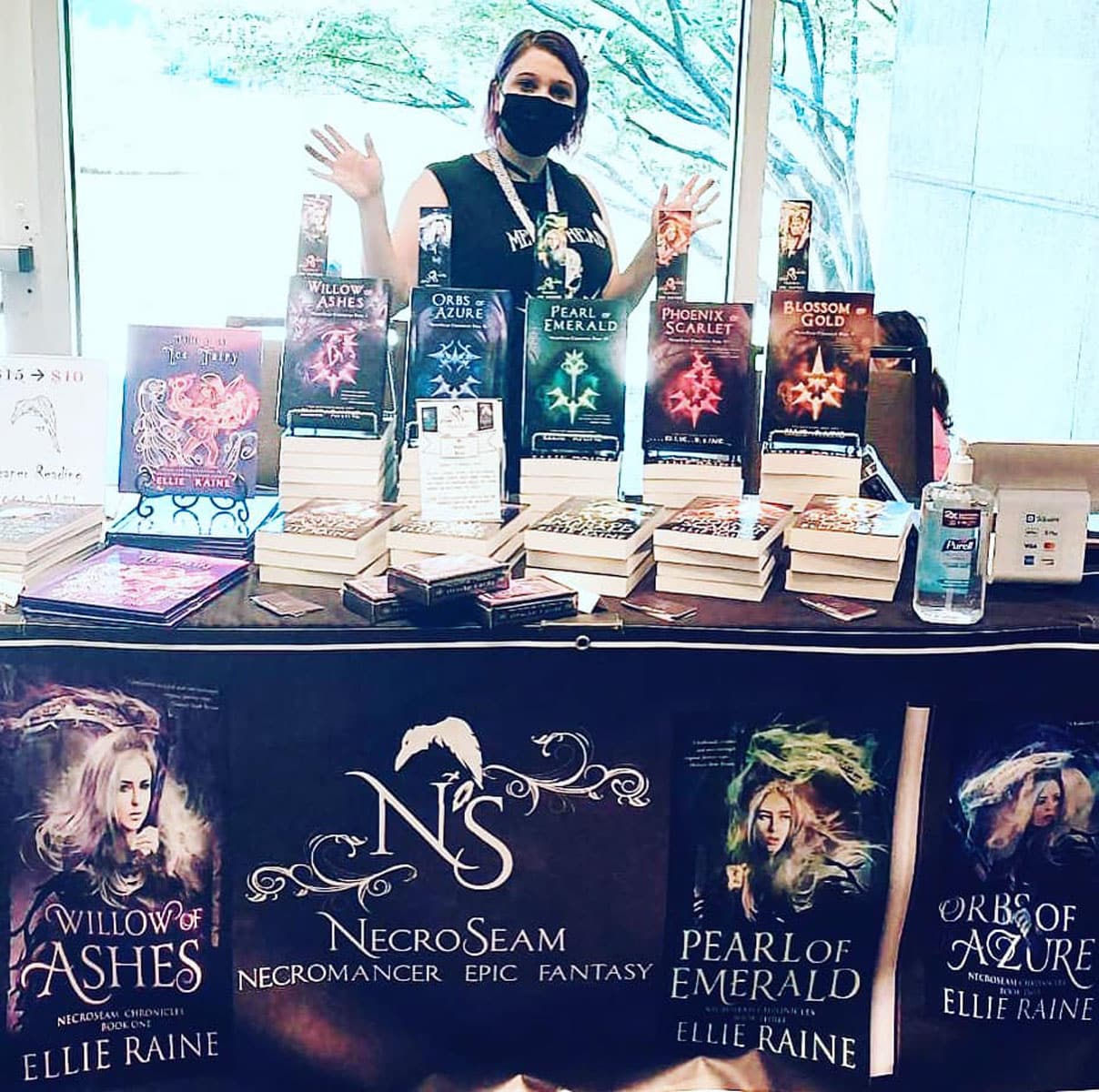
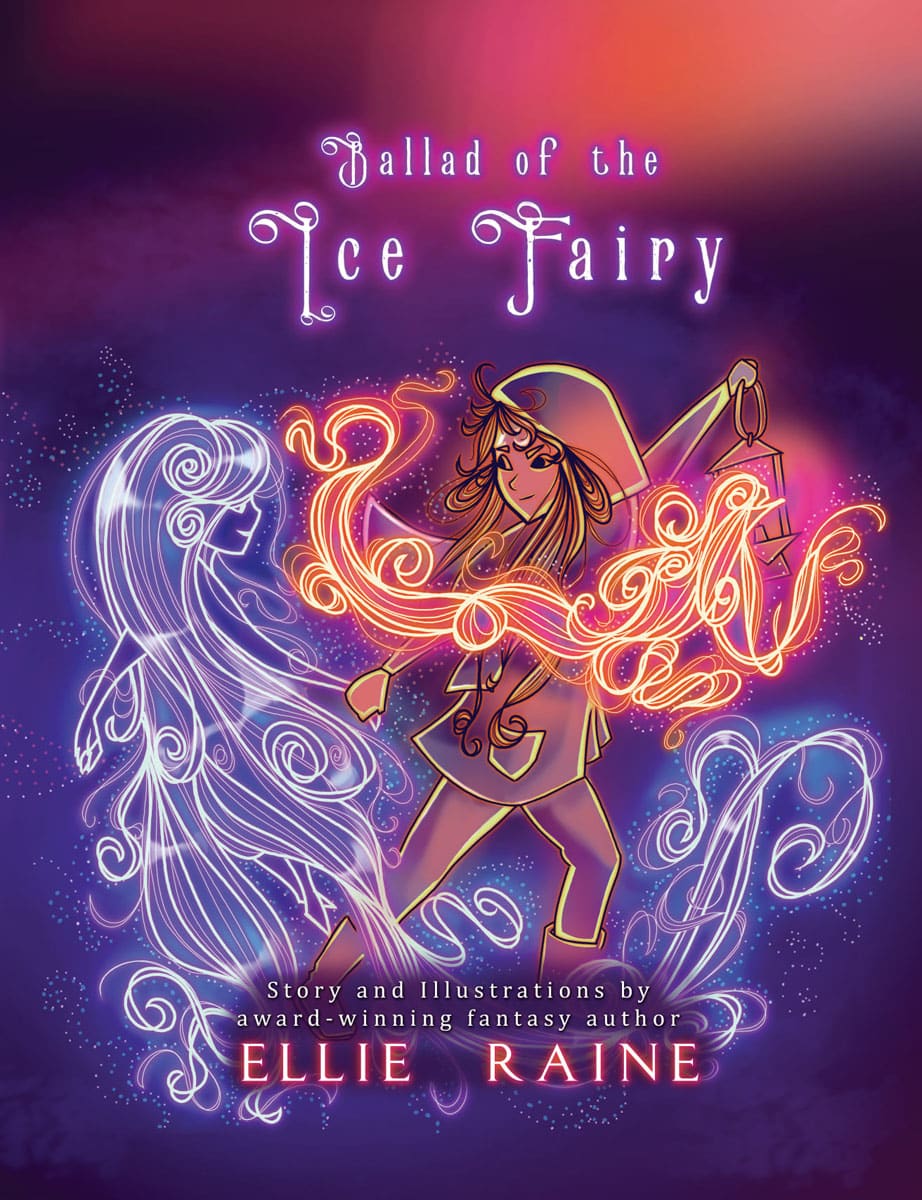
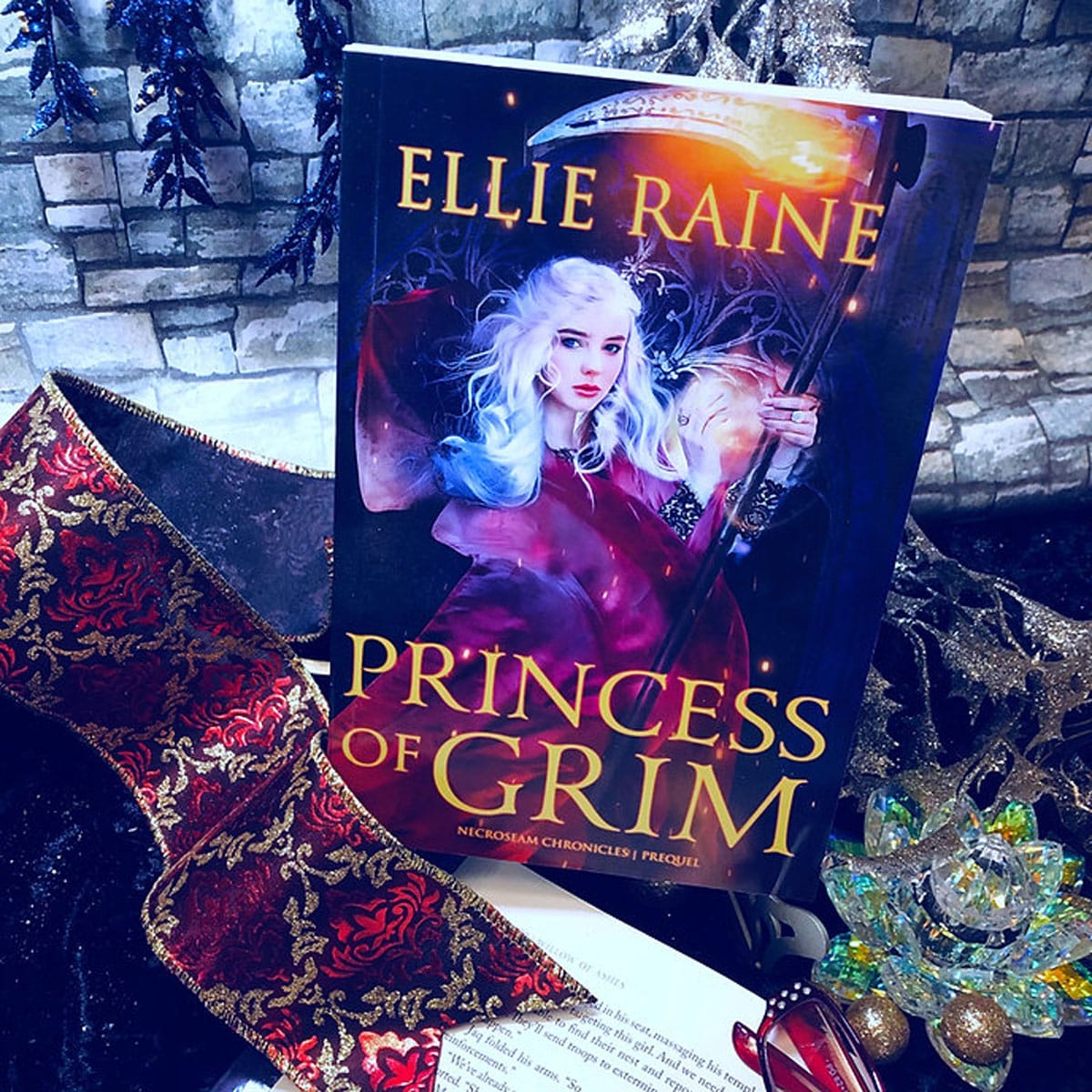

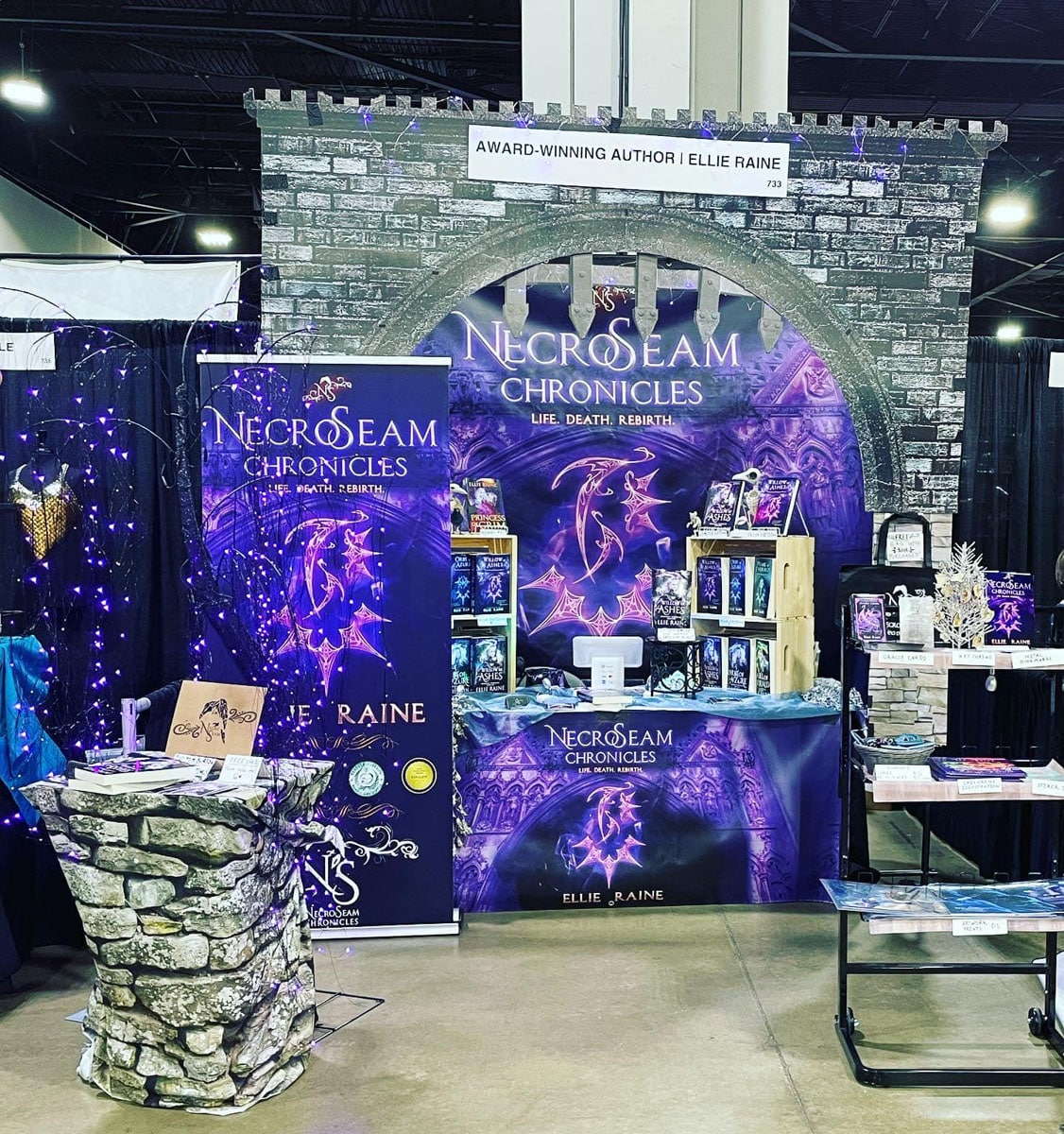
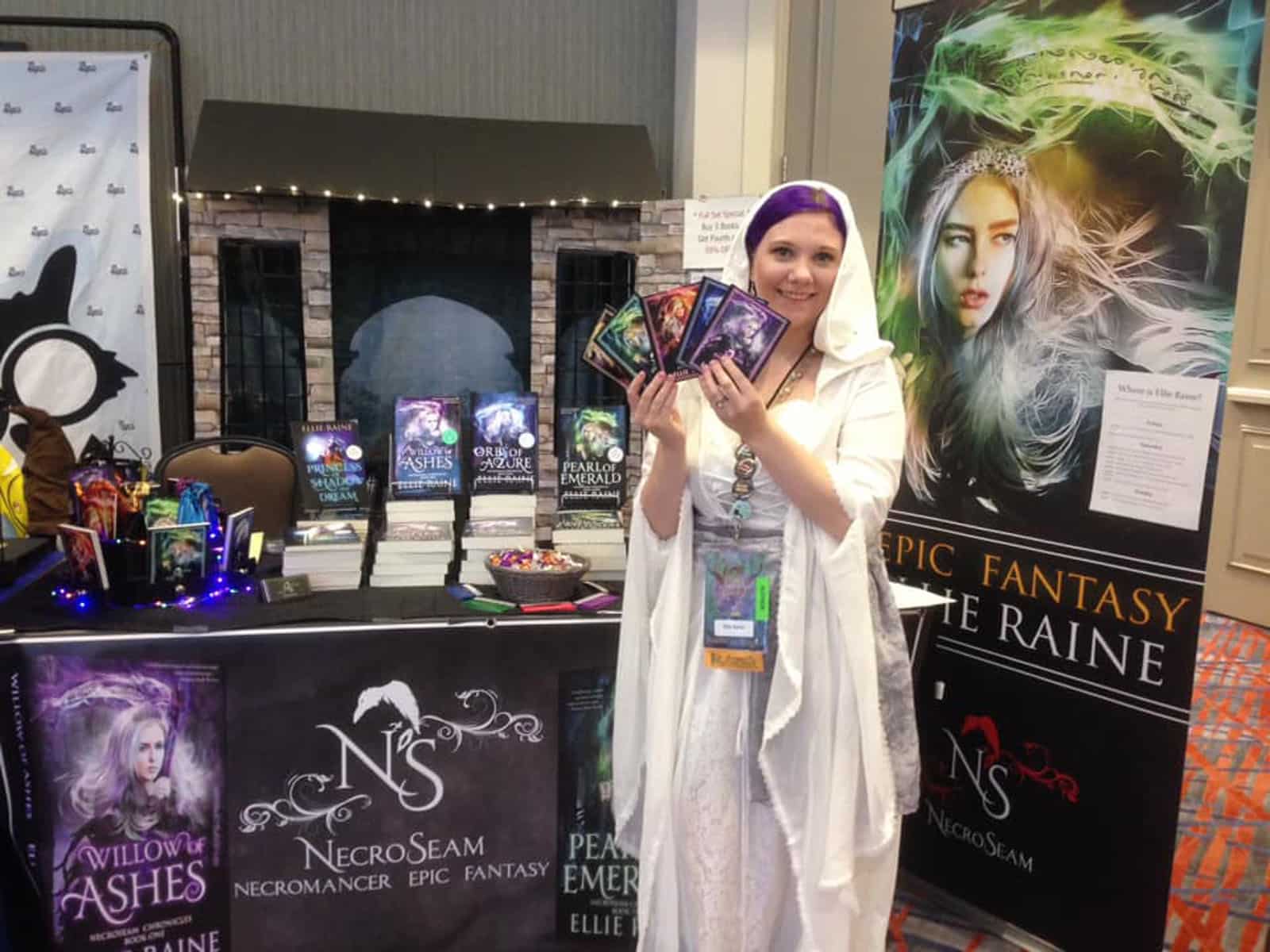
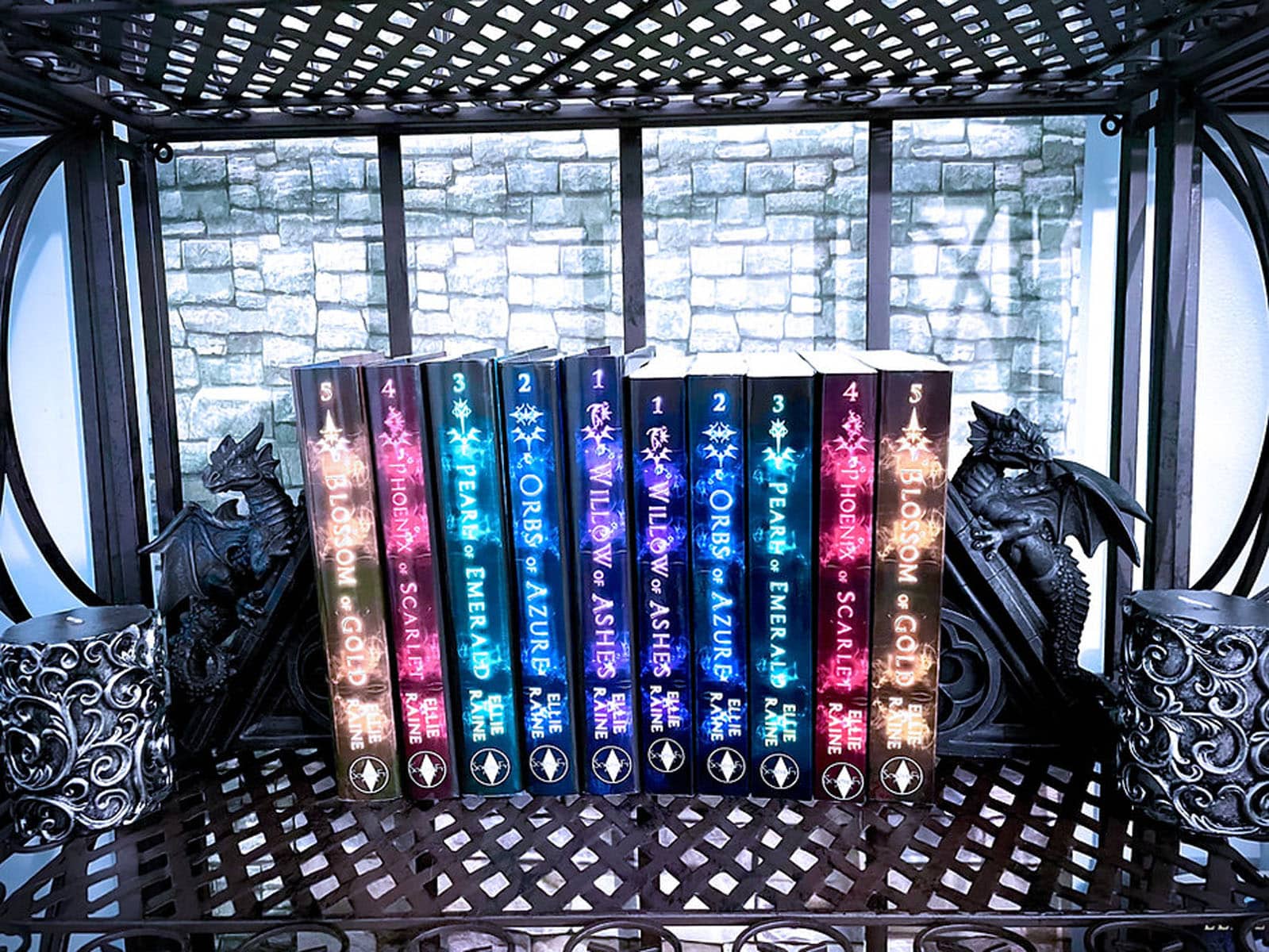
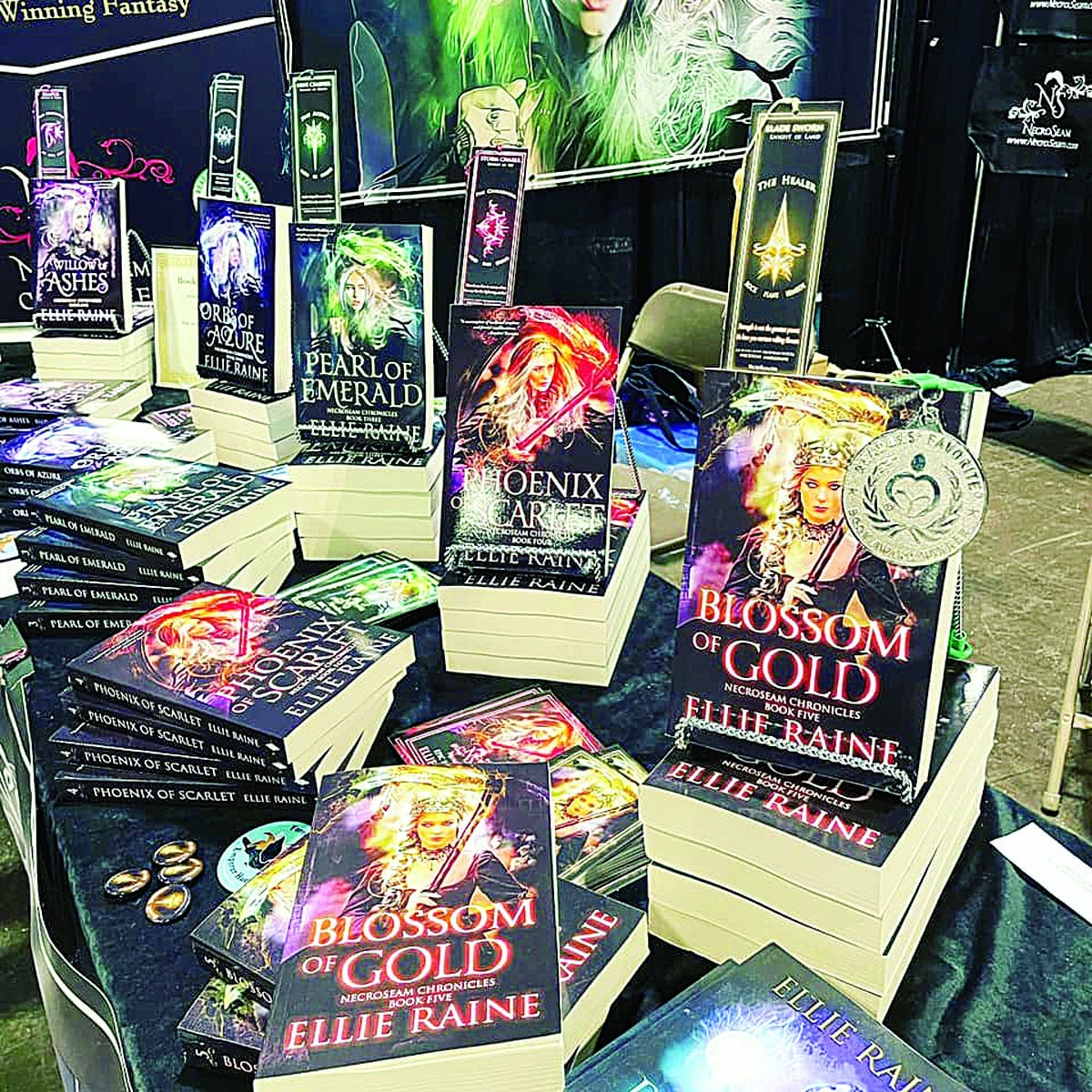
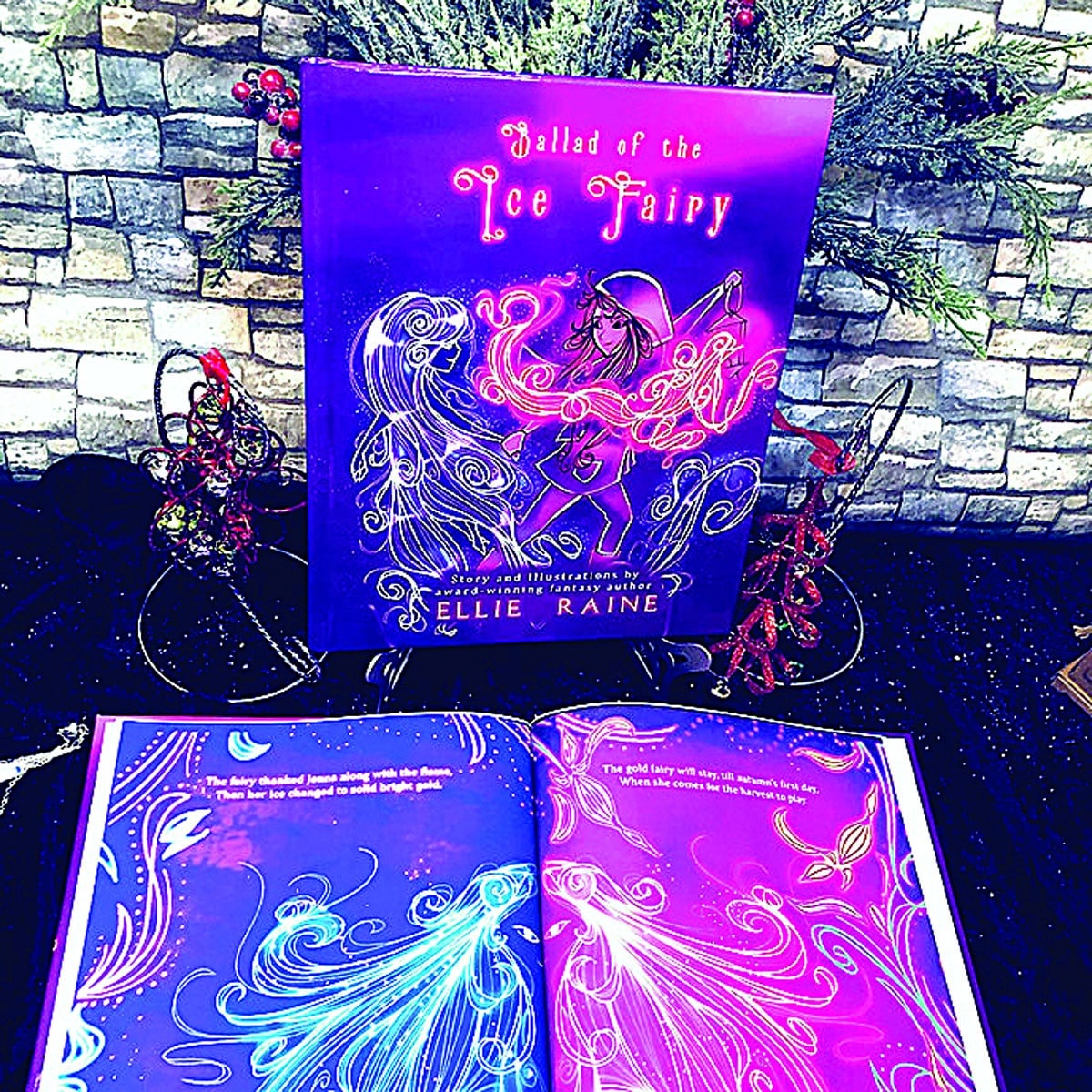
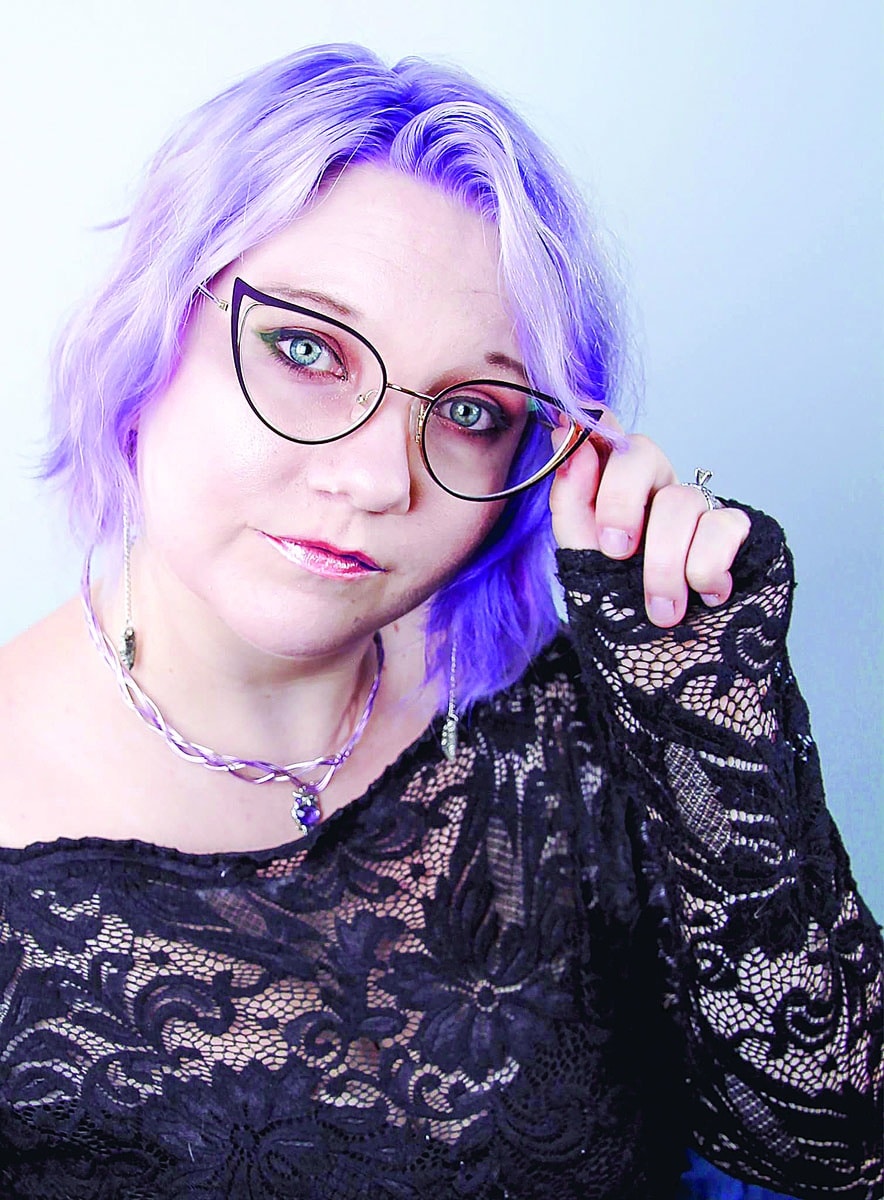
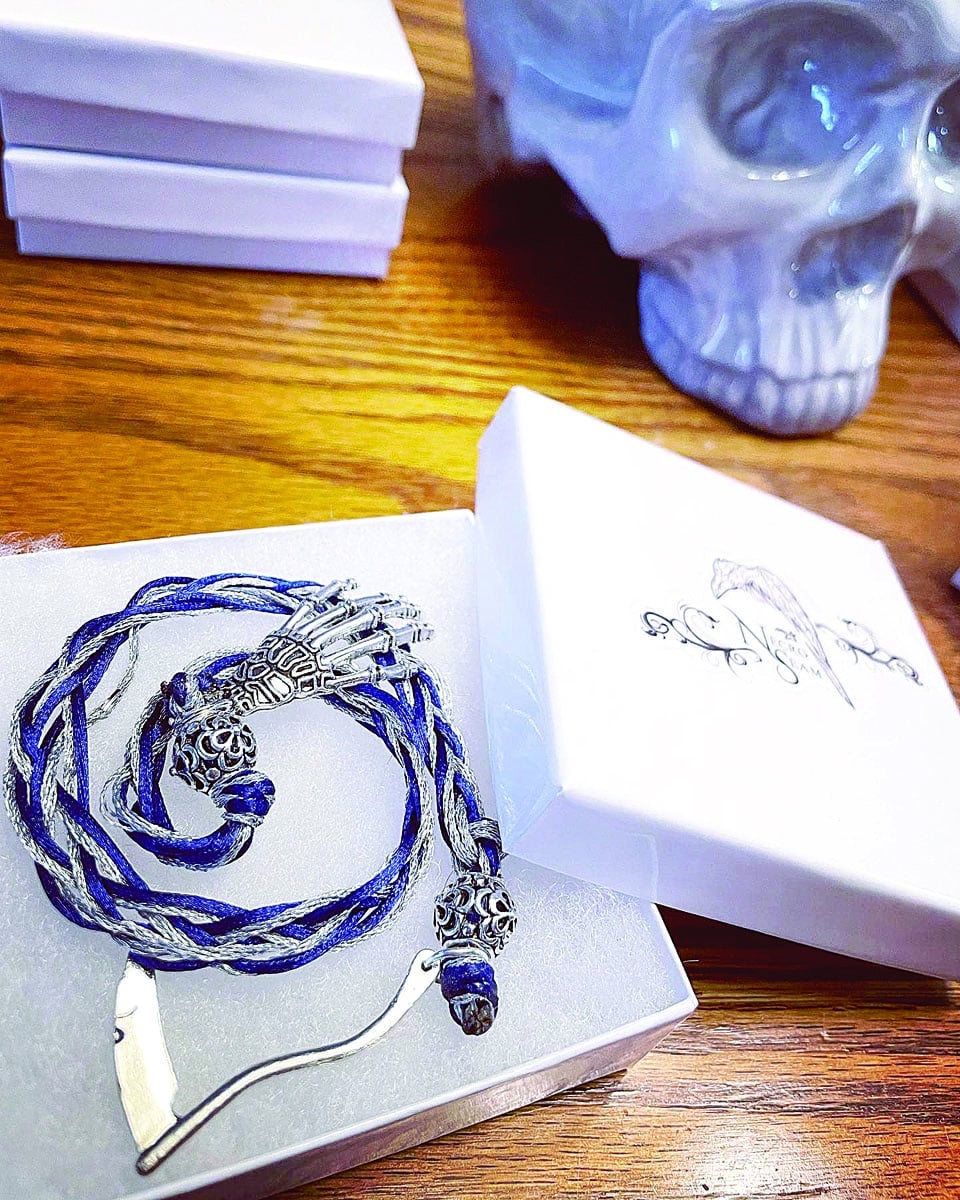
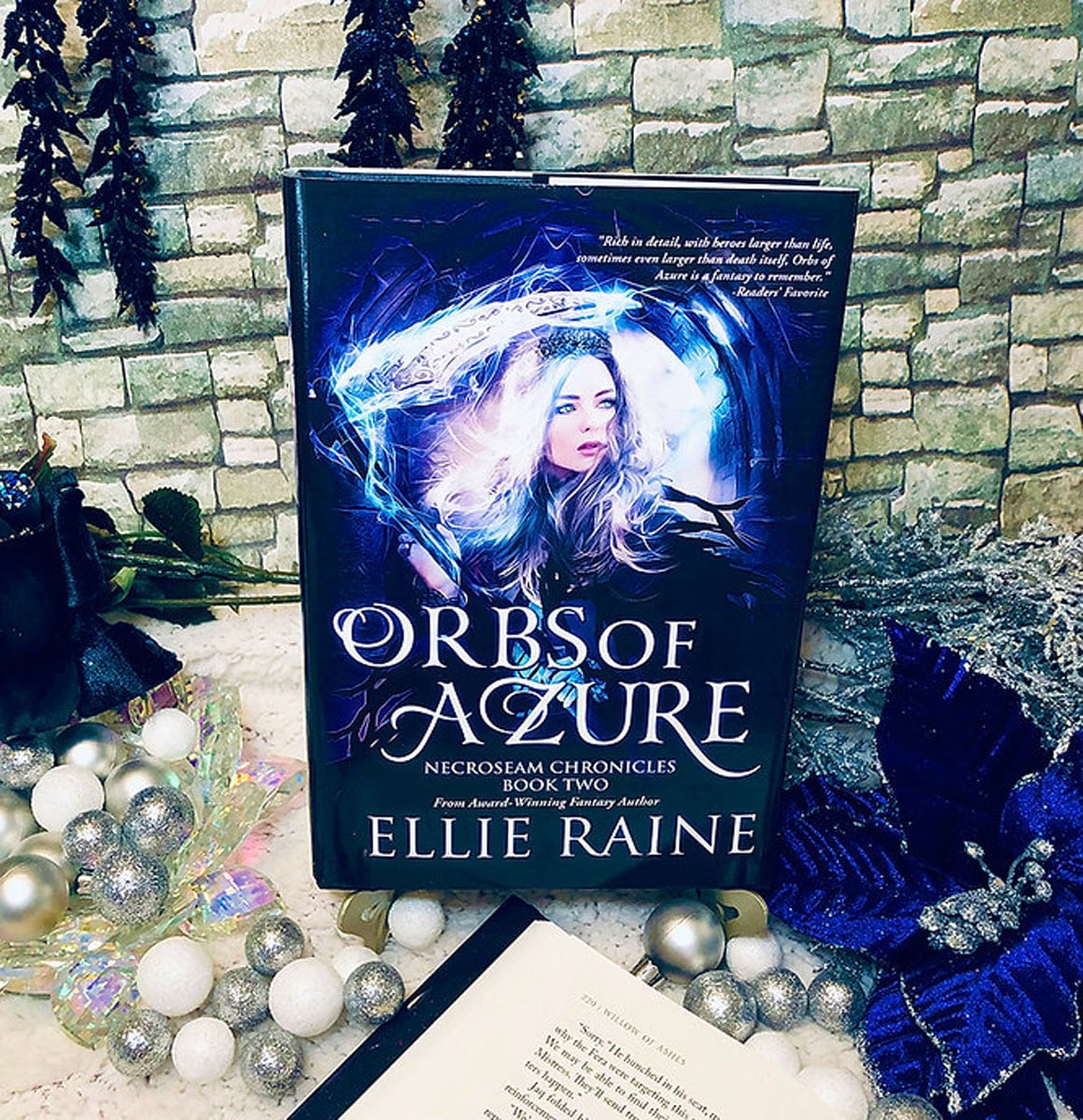
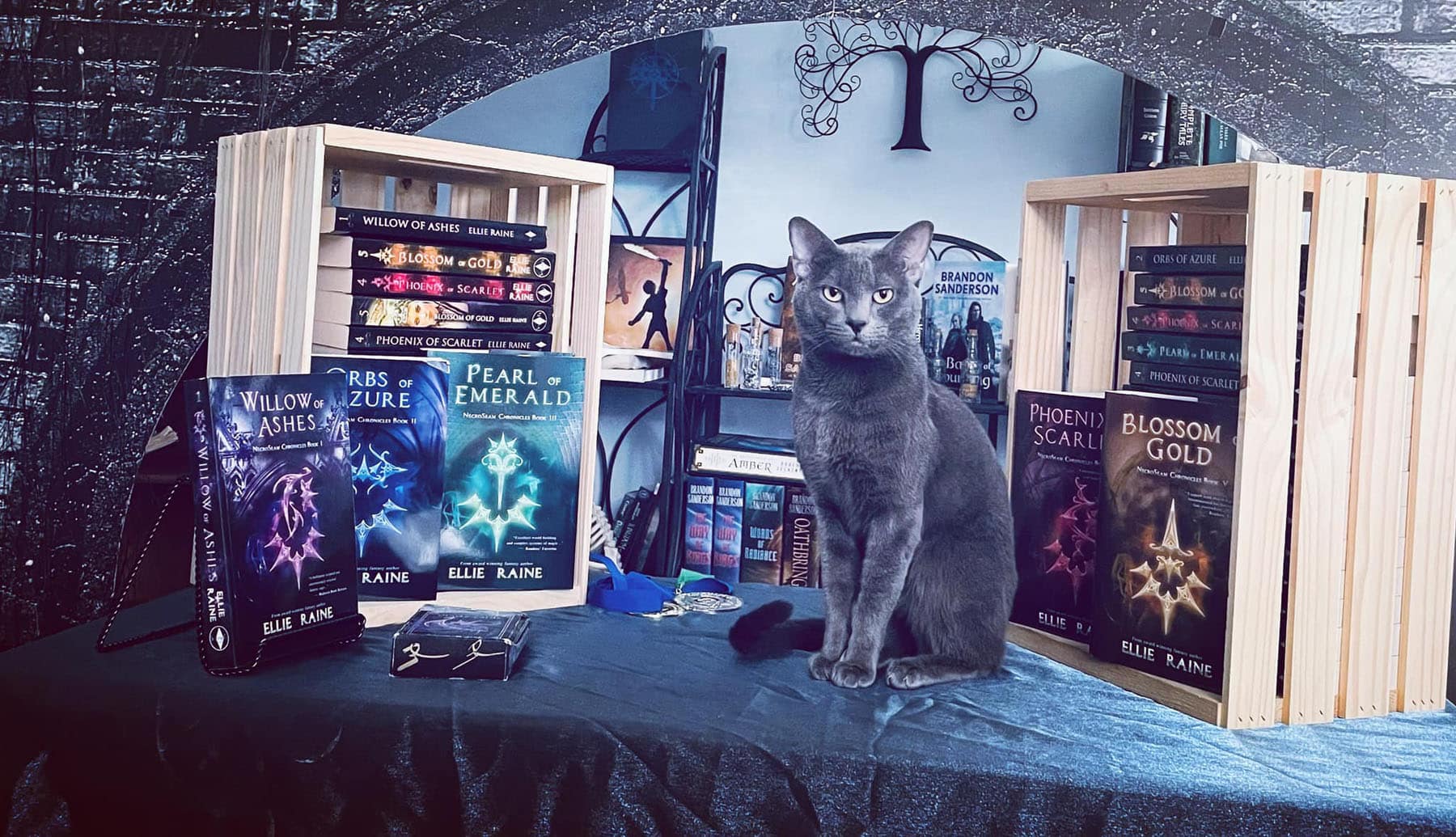
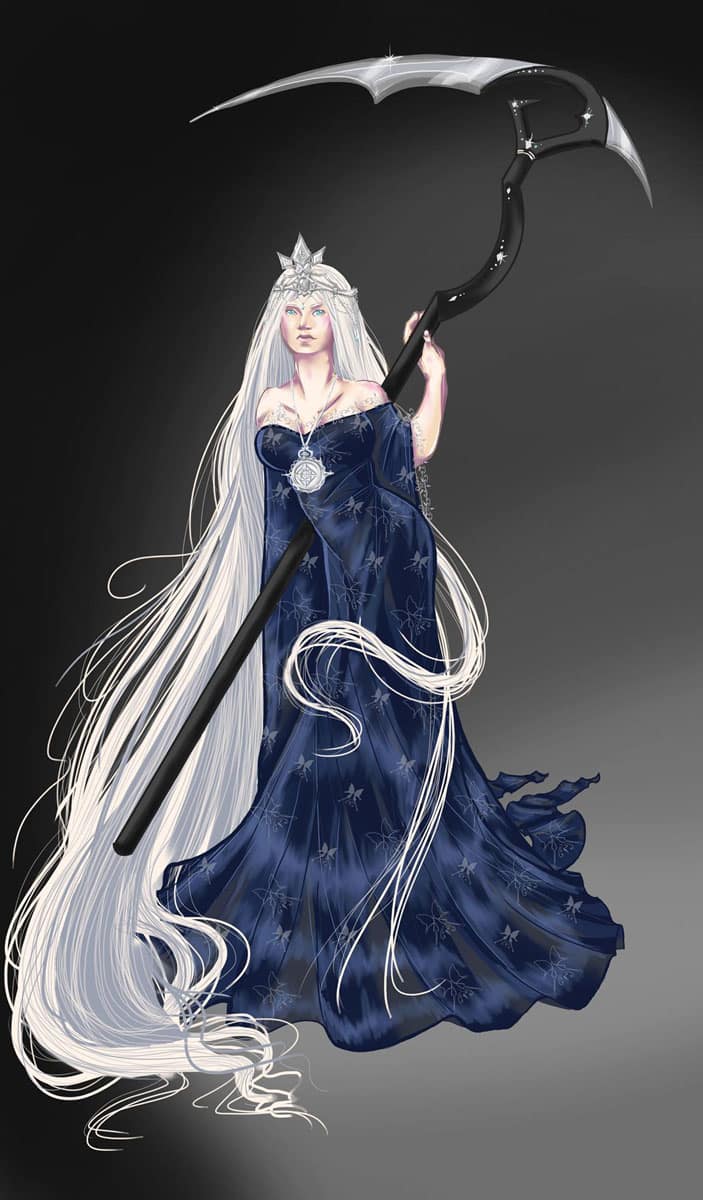
“Part of my process is kind of combining different arts into one unified piece. Because I like having the art with it and it kind of helps me think about and get a sense for who the character is, what their story is, what their personality is… There’s something about combining different creative things into one work that makes you connect with it more. It touches on all the senses.”
Ellie Raine
Timestamp, where to find it in the podcast:
- Intro
- Ellie’s Background
- Art, Music, and Writing
- Ellie’s Creative Process
- Necroseam and Other Projects
- Ellie’s Self-Publishing Journey
- Marketing, Merchandise, and Community
- Closing
Scroll down for the video podcast
Podcast Transcript
[00:00:30] Rico: Hi everyone. This is Rico Figliolini, host of Peachtree Corners Life. We have a great guest today, a Peachtree Corners resident and author Ellie Raine. Hey, Ellie.
[00:00:39] Ellie: Hi.
[00:00:39] Rico: Thanks for joining. Glad you’re with us. Before we get into the interview and introducing Ellie further, let me just say thank you to our sponsor, our corporate sponsor, EV Remodeling Inc. And Eli, the owner. They’ve been a sponsor of ours now for over a year, both of the magazine and and our journalism, and these family of podcasts. So they’re here in Peachtree Corners, based out of here. They’re really well rated on Houzz.com, if you use that to plan your remodeling work and stuff. So check them out. Eli, great guy. He has a great website, so you should go there. You’ll be able to see a lot of what he’s done, videos as well as pictures. Better than most of these remodeling places. And he does design to build, so everything you need under one house. EVRemodelingInc.com is where you can find them. So thank you Eli. So Ellie Raine is an author, she lives here in Peachtree Corners, and just to give you a little background. She has nine titles, at least as of this past summer. Nine titles in her name, right? You have a series, a five book epic fantasy series with two prequels in it. You are a two time winner, recognized by the reader’s favorite in the International Book Awards, and first place in the fantasy division for Writers Digest self-published awards. That was 2019. You know what, I took, you have a personality quiz online to see what knight…
[00:02:01] Ellie: You took it?
[00:02:02] Rico: I took it, yes, and I am blade sworn. A nd the funny part is the author that wrote this Ivy Marie Clark, that interviewed you for our print magazine had taken that same personality quiz and she was the same knight. So must be the same personality, I guess. We’re nurturing people, it was cool. So thanks for putting that there, you guys should check it out. It’s funny because it’s a small world. I saw you at the Peachtree Corners Festival, you had a booth there. And that’s how I got to know you. I bought your book, you autographed it, thank you. The next time I saw you after that was at the anime weekend, Atlanta. You had a booth there at the exhibit and also I was walking that, yeah.
[00:02:43] Ellie: Yeah, it was very unexpected.
[00:02:45] Rico: Yeah. I know. I can imagine. But it is a small world and I was there doing interviews with three voice actors for my podcasts. But tell us, you know, how long have you lived in Peachtree Corners? Let’s start there, a little background about who you are Ellie.
[00:02:59] Ellie: Alright, that’s kind of an interesting question. I actually was born and raised in Norcross, Georgia. And then it kind of became Peachtree Corners sometime around my high school years, I think.
[00:03:14] Rico: Wow.
[00:03:14] Ellie: So technically I’ve been in Peachtree Corners since it existed, I guess.
[00:03:21] Rico: Okay. Yeah, you were probably incorporated into it when the city decided to become a city.
[00:03:27] Ellie: Yeah, basically. It was a very interesting change because there was a lot of questions about what do I put on my address for my mail?
[00:03:35] Rico: Yeah. Yeah. Some people still use Norcross, believe it or not. So even companies do that, so this field, no one knows Peachtree Corners even after 10 years.
[00:03:43] Ellie: Yeah. So, you know, I went to Norcross High even though I didn’t live in Norcross anymore, according to the new city.
[00:03:53] Rico: Well, Norcross is only like one block out of the city at this point.
[00:03:57] Ellie: Yeah. For my old house, well my parents are still there. So we just basically could walk to high school if we wanted to. We never did want to though, because you know, I’m not a morning person, so.
[00:04:11] Rico: No, I can’t imagine. You’re probably more of a night person I bet.
[00:04:14] Ellie: But yeah, I went to Peachtree Elementary, I went to Pinckneyville Middle School, and I went to Norcross High school. Went to college, got married. I think we, moved to Alpharetta at some point for a year. Went to Duluth for a couple years, and now we’re back in Peachtree Corners. And I’ve got a child now, so, it’s all fun. .
[00:04:36] Rico: Is it back to Peachtree Corners because of the Covid? Or did you?
[00:04:40] Ellie: We were looking around for a house and this was right before. I think it was before Covid, or maybe it was during Covid. Either way, it was right before the housing prices just skyrocketed and we found a house in Peachtree Corners right smack dab in the middle of where both of us used to live. Because my husband is also from Peachtree Corners.
[00:05:00] Rico: Wow.
[00:05:01] Ellie: Yeah, we went to high school together and we’ve been dating since then, so.
[00:05:04] Rico: So were you writing in high school? Where’d you get this bug? This, it is a bug, right? Deciding to do this, to write.
[00:05:11] Ellie: What’s weird is I never thought of myself as a writer back in school. I have dyslexia, I’m slightly autistic, and I was a slow reader in my viewpoint. But apparently I was comparing myself to my avid reading family. So according to all my friends no, no, no, you read a lot. But writing wise, yeah, I didn’t expect to be into writing. I think I took like a, some kind of contest thing in middle school for writing and I got like a judge’s award for it. But I didn’t consider myself a writer because it was just a thing I did for school and then I went to college.
[00:05:46] Rico: Okay. I was gonna ask.
[00:05:48] Ellie: Yeah, I went to college for game art and design. So I wanted to create this story into a video game originally.
[00:05:55] Rico: Okay.
[00:05:56] Ellie: And they had a creative writing course in the Art Institute of Atlanta while I was doing that. I didn’t know what to write, so I just started writing my video game idea into a book form and I absolutely loved it. Yeah. So like art is, I have a love hate relationship with it. I really love to draw, but what I really love is just creating the story and creating the characters behind it. So art tends to make me angry the more I do it because it doesn’t fully hit, the way that I want it to. So it makes me angry. But when I was writing, I was calm and I was happy with writing.
[00:06:40] Rico: Happy with writing, that’s good.
[00:06:42] Ellie: Yeah, so that’s when I switched gears and moved on to English and all that.
[00:06:47] Rico: Yeah, okay. That’s interesting. And the fantasy aspect of it?
[00:06:52] Ellie: I was raised on fantasy. It’s basically the main genre that I absolutely adore. I grew up with Terry Pratchett, Discworld series. I grew up with dragons all over the place. Yeah, my parents just have these giant bookshelves all over the house filled with fantasy books.
[00:07:11] Rico: Oh wow.
[00:07:11] Ellie: And science fiction. But I was more into the fantasy stuff because magic, dragons, swords,
[00:07:17] Rico: King Arthur, Harry Potter, Final Fantasy?
[00:07:20] Ellie: Oh yes.
[00:07:21] Rico: As far as games and stuff. And you played Zelda, I’m assuming, and stuff like that?
[00:07:25] Ellie: Yep. All the good classics I guess you would call them.
[00:07:29] Rico: Are you into Game of Thrones? Talking about dragons.
[00:07:32] Ellie: Yeah. I mean, I read the first book. I still need to read the rest of them. I watched the show and everything, but I know that obviously it diverts from the rest of the, the series. So I kind of want more dragons. But you know, that’s me. It doesn’t mean it’s bad. I still like it. Yeah, I still like it. I just wish there were more dragons.
[00:07:51] Rico: Who’s your favorite author today? Like new authors that you might have? Are you still consuming? Like, do you still consume fantasy? Do you still read a lot? So, who now are you reading that’s new maybe or new to you?
[00:08:03] Ellie: New, I don’t know if Brandon Sanderson counts as new.
[00:08:07] Rico: Yeah, he probably doesn’t. He’s been around for a long time.
[00:08:11] Ellie: Yeah. He’s not that new, but like, so Sanderson. Rachel Aaron is another favorite of mine. She’s done The Legend of Eli series and The Heartstrikers series. It’s about dragon shifters.
[00:08:22] Rico: Okay. Okay. But you know, I was gonna say, you, not to jump, but we’re gonna jump around here probably a little bit. You have something in common with Sanderson because when I got to reading some of his stuff, I realized through interviews that he had and blog posts and stuff that the author it’s not just the books. I mean, he makes most of his money, probably more than the books, but in merchandise. And it’s kind of interesting how people have gone to that. I mean, Star Wars with Disney World and Disney World with their merchandise. It seems like if you’re writing, at least today, if you don’t have merchandise that you’re just being a disservice to yourself. Because hey, if I can listen to an audible book and pay one credit for it, I keep wondering how much the author is making on that book. So you have a tremendous amount of merchandise. Do you design some of that yourself or?
[00:09:10] Ellie: I design most, if not all, of it.
[00:09:13] Rico: Okay, but you have necklaces, pendants, and all sorts of things going on.
[00:09:17] Ellie: Yeah, some of it’s handmade with the braided bookmarks and some of the jewelry. Because I just can’t seem to pick one. That’s why I need to, I need something to do with my hands, so I just do it.
[00:09:29] Rico: Is that because of the creative side that you have, the drawing? I mean, do you sketch them out before you do it actually?
[00:09:34] Ellie: Sometimes. It’s usually best if I do, but I don’t always sketch it out first. But it does turn out much better if I do.
[00:09:43] Rico: When you got into writing and fan tasy was where you started, obviously with this. You have five books and two prequels on that series or on your best series, I guess. Tell us a little bit about that. Necroseam, is that the way you pronounce that? Tell us a little bit about how that came to you and what that story’s about.
[00:10:00] Ellie: Yeah. So, it goes back to high school. I just started drawing characters and started creating stories surrounded by these characters that I would draw. And the first one started with the main character, Xavi er. So it’s what I would be doing in math class instead of equations.
[00:10:17] Rico: Okay.
[00:10:19] Ellie: So part of my process is kind of combining different arts into one unified, I guess, piece. Because I like having the art with it and it kind of helps me think about and get a sense for who the character is, what their story is, what their personality is. And I also am a musician. I really like creating songs. I like writing songs into the stories. And if you look at our audio books I actually have the narrators produce and sing. The songs that are in the books, so we’ve got that whole deal going on. I don’t know, there’s something, there’s something about combining different creative things into one work that just kind of makes you connect with it more. It kind of touches on all the senses.
[00:11:08] Rico: Do you have a Spotify playlist?
[00:11:10] Ellie: Actually we do.
[00:11:12] Rico: You do? Okay.
[00:11:13] Ellie: That’s because my bestie slash narrator Krista, kind of started that. And she was like, these are the songs I kind of feel like would go really well with the, like, reading the books. And I was like, this is really fun. So we just started randomly gathering music that could fit with the books while reading.
[00:11:33] Rico: Right. So do you start the process actually drawing a character? Like when you think up of a character, do you sit there and draw the character first?
[00:11:41] Ellie: Most of them, yeah.
[00:11:42] Rico: And do you do, I’m assuming you do some sort of, different writers have different ways of doing this, I guess. From the ones I’ve interviewed and read about. Do you create like a background, the backstory? Do you write that out at all? Do you like create who they are, where they came from? Pros and cons of who they are and stuff? Do you create any of that before you get into the writing some of it? Or does it expand as you write?
[00:12:04] Ellie: A little of both. It really just depends on the character. If it’s the main, like the main crew of the protagonists and their friends that are part of the party, you kind of need to know every single one of them first. Their backgrounds, where they’re coming from, their personality, all of it. When it comes to secondary characters, then it’s a little bit easier to kind of work that in as you’re going. You can just go back in the editing and make it line up earlier.
[00:12:32] Rico: Do you also plot the stuff?
[00:12:34] Ellie: Oh, absolutely.
[00:12:34] Rico: The story ahead of time?
[00:12:35] Ellie: Yep. Absolutely. So, I call it an acre point plotting where I have a master outline of events that I want to happen.
[00:12:45] Rico: Okay.
[00:12:45] Ellie: And I know always where I’m going to end. So I start with where it’s going to end. And I did this for the entire series overall. So I knew where I was going to end. Then I went to figure out how I was gonna begin, and then I had one major point for the middle, which would be book three.
[00:13:05] Rico: Okay.
[00:13:06] Ellie: And once I had those three down, beginning, middle, end. Or, end, beginning, middle, however you want to do it. Once I had those down, I would kind of go into sort of more of a micro bullet point anchorings for beginning, middle, end, for the beginning. Beginning, middle, end, for the middle. Beginning, middle, end, for the end, type of thing. Sometimes I had to change what happened and then I had to like move it around because I would get to a plot point that was supposed to happen like books later. But once I got to the point in the writing itself I realized, oh, I’ve gotta do this now. So sometimes you’ve gotta be a little bit flexible with it, because otherwise if it doesn’t feel natural while you’re in the story, then it’s probably not going to translate well for readers.
[00:13:55] Rico: Not surprising. It seems like every author, the book also is alive, right? So the book is actually guiding, almost like you’re living there. It’s almost like one author I know said they can’t wait to see where their character’s gonna take them. I mean, what’s your, as far as your process layout, let’s go there a little bit. Do you have a word count or an hour count? I mean, how do you pace yourself and where do you put yourself when you write your stories?
[00:14:17] Ellie: I try and do one sentence a day. Some days I can’t do anything because you know, administration. Gotta do all that social media work.
[00:14:28] Rico: Did you say one sentence a day?
[00:14:31] Ellie: One sentence. That’s the goal. So I set small goals that are very achievable.
[00:14:37] Rico: Okay.
[00:14:37] Ellie: And it’s actually a trick. It’s like a brain chemistry trick, loophole, creating productivity.
[00:14:44] Rico: Okay.
[00:14:44] Ellie: So one sentence a day goal. You do the one sentence. And because you have achieved the goal you set out to do, you get a hit of dopamine in your brain. Which you know is like, oh, I finished my goal and now you feel great. You’re feeling wonderful. And guess what? Now you feel so good that you can keep going.
[00:15:07] Rico: That is interesting. That actually, I can see that.
[00:15:10] Ellie: And the more you add onto it, the more sentences you do. It’s like, I got so much done today. I exceeded my expectations of what I was going to do today. And it kind of just tricks your brain into thinking that you’re, you can do more. And you did like such a great job that you’ve just gotta keep going. And it gets you excited about it. So it’s like a fun little trick.
[00:15:33] Rico: Yeah, I like that. I think I’m gonna use that on my daily thing. I have a to-do list that grows every day and sometimes there’ll be days where I’ve done a lot of work. But none of it is on my to-do list. And I can see that if I do one of those items on that, I’ll probably get that dopamine feel and keep going.
[00:15:52] Ellie: Yeah, it’s, it is a fun work around.
[00:15:54] Rico: Yeah. And so in the process then, how long does it actually take to complete your first draft of a novel? I know the rest of it could take long, depending on edits. But on your first draft of a novel, how long does that take?
[00:16:07] Ellie: Well, back in the day, it used to take three months to finish a first draft, then another three months of editing. So six months to basically come out with a book. But nowadays with a child, it’s been a lot harder and much slower. So, it takes a lot of time to finish something when you don’t have childcare. So, yeah.
[00:16:30] Rico: Yeah, I can imagine.
[00:16:31] Ellie: So. It’s, I don’t even know yet. I’ve been able to finish a couple short stories, but as far as book-books go, I don’t know yet. Because I’m still in the middle of like three of them.
[00:16:43] Rico: So are you doing, so the short stories that you’re doing, are you getting those published online? Or how are you doing, how do you handle that with your readers?
[00:16:53] Ellie: Well this recent one just got accepted into an anthology. But I can’t really disclose much of that, because you know, NDAs and all that.
[00:17:01] Rico: Sure.
[00:17:01] Ellie: But so that’s going through, not myself. That is for an anthology. The other short story I have, I don’t know what to do with it yet. It’s just kind of sitting there in the ether. Waiting for some kind of opportunity for it to have a purpose.
[00:17:18] Rico: Okay. But it’s good to keep writing though. And I didn’t even think about short stories being a good conduit. Have you ever done novellas?
[00:17:26] Ellie: Oh yeah. Actually I’ve done, let’s see, 1, 2, 2 novellas. I guess this one up here is more of a traditional novel, so yeah. So my novellas range about 40,000 to 45,000 words. And one of them is the prequel to the main series, and another one is actually the first book in a series of a paranormal noir.
[00:17:53] Rico: Okay. Are you using that to sort of jumpstart that series? I’m imagining it’s going to be a series of books.
[00:17:59] Ellie: Yeah. I mean, at first I actually wrote this for one of my publishers a couple of years ago. And it was supposed to be 30,000 words according to the contract, but I ended up overshooting to like 40, 42,000. And then eventually I just did a second version for myself.
[00:18:18] Rico: And we’ll have a link in the podcast for people to go check the books out. Now, you had an interesting way I think of going about this really. You got published in the traditional sense of the word, a traditional publisher. But then you decided to go the self-publish route after that. Do you want to share a little bit about that, how that worked for you? I mean, other people that might have an interest in writing or are writing might want to look at and listen to this to see what you did.
[00:18:43] Ellie: Right. So I did start with two traditional publishers for two different stories. And for the main fantasy series the first book, it was with a small publisher and things were great. And then the second book came. It came time to publish the second book and they came back saying that it was too big for them to afford to print. So, they had to make it an ebook only or I had to split it in half. And I tried splitting it in half, and then I realized that splitting it in half for the second book meant I would have to do that for all the other books later in the series because they were all as big or bigger than that book.
[00:19:28] Rico: Right, right.
[00:19:29] Ellie: So I tried doing that, splitting everything in half. And you know, trying to fill in the gaps of, you know, oh, well now this needs a conclusion. Now this one needs a beginning and things like that.
[00:19:39] Rico: Right.
[00:19:40] Ellie: And it just was not working. It kind of broke my excitement about the story. I basically fell out of love with it being broken up like that. Because when I outline each of the books, I’m very exact about where the arc is, where it’s going, and what is considered like the whole arc. And splitting it in half just kind of threw off the rhythm and it threw off the pacing and it just felt soulless. Because I kept trying to push in just this random, empty spacing of content to try and make it the right size for compensation and it just was not working. So eventually I asked for the rights back for book one and I just took it back and put everything back together and just did it all myself.
[00:20:33] Rico: Wow, okay. So now you’re self-publishing, but people can find your books on the traditional places, right? Amazon, you even have all your books, or a decent amount on Audible, I guess people can listen to them too.
[00:20:47] Ellie: Yes. We have two audio books out right now. We are more than halfway through the third one. So it should be out by the end of this year or January latest. I can’t properly describe how much I love these audio books. They’ve ruined audio books for me. Like, my narrators are just so amazing that I actually like the audio books better than the actual physical books.
[00:21:14] Rico: That’s funny.
[00:21:14] Ellie: So yeah, I cannot recommend the audio books enough. And you know, check out my narrators, they are amazing voice actors.
[00:21:22] Rico: Some of these, I mean, when I listen to audible books, I mean some of them are performances.
[00:21:27] Ellie: Yes.
[00:21:27] Rico: That’s what you have to look at them as. They’re not just reading the story, they’re performing that story.
[00:21:31] Ellie: Yeah. And for this story, which is very much action adventure, it really suits it.
[00:21:37] Rico: That is cool. So are you working along the same chronicles that you’ve started or are you looking to getting to a different storyline? Are you launching a new story?
[00:21:48] Ellie: Both. I’ve got some extra stories, different timeline in the Necroseam world. Different characters planned, ready to go. Some of them I’ve started. But I have other stories in other worlds that I’ve been kind of working on.
[00:22:03] Rico: Okay, alright. The writer never stops. And you’ve also written a book for young readers as well. So I think that’s called A Ballad of the Ice Fairy?
[00:22:13] Ellie: Yes, I also did the illustrations for that.
[00:22:15] Rico: Beautiful work too. I was looking at it. Very nice work. And that’s available as well on demand. I’m assuming you self-published that as well?
[00:22:22] Ellie: Yes. We actually had to go through a different printer other than KDP Amazon or IngramSpark. We didn’t like the quality of their images and their paper wasn’t really that good for children’s book illustrations. So we went with a different printer and right now you can only get it directly on our website.
[00:22:43] Rico: Oh, as a digital edition? Oh, you mean the book itself?
[00:22:46] Ellie: The book itself.
[00:22:47] Rico: Okay. When you publish by a traditional publisher they have a marketing department, but the author still has to go out, do book signings, do your own promotion. You have to cultivate your own followings too. The traditional publishers, I don’t think do that as much as they used to anymore. But so you’re actually also going to a lot of different events. We saw you, like I said, at Anime Week in Atlanta, and that was surprising. But not surprising because a lot of fantasy writers do those types of things. But it looks like you’ve been, since the summer, I guess you’ve been to places like Savannah Mega ComicCon, Key City Steampunk Festival, Multiverse Fandom Convention. I haven’t heard of that one. The Conjuration, which is November fourth and sixth, just passed. And people can listen, find you, follow you on most of the social media, I guess. TikTok, Instagram, Facebook, YouTube. Do you do trailers for your books?
[00:23:39] Ellie: Yeah I’ve done a couple trailers. I kind of prefer the audiobook trailers now to be honest, because they just, they’re more engaging.
[00:23:46] Rico: Sure. And people can go online to your store though. I mean just like Sanderson sells swords and other things for his stuff. Which is interesting because he does it out of, I think he does it out of his house or something, is what I understood. Or maybe the pick and pack of it is somewhere else. Do you find that’s actually helped you more?
[00:24:04] Ellie: Oh my gosh, yes. Man, having the weapons is one of the dreams, man. One of the dreams. Just need the, need a bit more funding for that, so.
[00:24:14] Rico: Yeah, yeah. It’s a lot different. But the jewelry part and some of the other stuff you do it’s kind of neat to draw people right into that story. I had seen someone else, I think it was a local Georgia writer that does novels. And she actually created jewelry specifically for each of the books that she wrote. So it comes actually with that piece of jewelry and the book packaged together which is kind of interesting. So do you want to share anything else with us as far as writing methods or other things that you do? Have you gone back to Norcross Highschool? By the way, the media center, if you’ve ever gone back to talk about your books to students there?
[00:24:48] Ellie: I’ve never considered that. Is that a thing I can do?
[00:24:52] Rico: Yeah. Yeah, you can. I’m pretty sure you can. I know.
[00:24:55] Ellie: I don’t even know who to talk to about that, to be honest.
[00:24:57] Rico: You probably go to the head of the media center, at Norcross Library. They had Mayra Cuevas I think. She was a CNN producer and she wrote a book, a series of books, I think. And there were young adult novels actually from the Hispanic, Latinx point of view. And she was one of the speakers a couple of years ago there. But they do sometimes do that. And I know the Gwinnett Public Library actually does, not only in person, but online having authors come in and stuff like that. It’s kind of neat. I think young kids or adults, I mean, 30% of young adult novels are read by adults. I think those are adults that want to get back into their young, into the youngness of where they were, maybe.
[00:25:35] Ellie: Yeah, I think it’s also because young adult books don’t take themselves too seriously. So they…
[00:25:40] Rico: Yes.
[00:25:41] Ellie: They know they can have more fun with it. So if the author is having fun, the reader’s gonna have fun.
[00:25:45] Rico: Right. For sure. I mean, I’m into, I have three kids and I’m into, we watch everything from Studio Ghibli, every movie. And because of them I’m into anime and there’s a whole variety of anime from light slice of life to the stuff like Death Note. I mean, they’re all different from American animation, that’s for sure. So what else can you share with us as far as maybe that we haven’t touched upon as far as writing style or what you do as a writer?
[00:26:09] Ellie: As a writer? I mean, I feel like we’ve kind of covered that pretty extensively, but I could talk more about why the merchandising is so important.
[00:26:17] Rico: Yeah, let’s do that. How did that start?
[00:26:20] Ellie: I mean, this is just my observation from it, but the reason why I think merchandise is so important is mostly because it’s an indication that there is a community or can be a community created from this work. And I think having a community around a series is what makes a series successful. It kind of brings people together, it gives them something to talk about it kind of helps them get into the immersive nature of that story and of that series.
[00:26:51] Rico: Interesting. One of my kids, she just finished her masters in psychology and she’s into fantasy books and stuff like that. What she grew up on was like the Warrior Books, these are cat warriors and stuff. And what she’s found is that she would go online and play some fantasy role games and stuff, even now, she’s 24. Because it’s fun it’s mindless sometimes. And as she’s doing it, she’s meeting people and she’s talking to them. Like there’s, could be like, she has a group of, I think six or seven people they have discussions unrelated almost to what they’re doing. It’s just a community they built around that. She’s starting an online discord book club to talk about some of the books they all have in common that they’d like to read. Which is again, social media, so and that’s where I wanted to get to. Social media is kind of an interesting platform place that writers did not have before. And I don’t even as it was coming in, I don’t think, I mean yes, Stephen King will be on Twitter and he has millions of followers and he can tweet stuff. But do you find social media is helping you? Which platforms do you find more beneficial to you?
[00:27:49] Ellie: Yeah. Social media definitely, I think is the only way that has helped any kind of visibility, online at least. Conventions are always going to be the top, like biggest visibility jumpstarters. But online social media is pretty necessary. I haven’t had too much success with Twitter, but I have had some people meet me from Twitter specifically who came to the shows to come see me because they followed me on Twitter and or TikTok or Instagram. So there are some individuals that I do actually only talk to in those platforms because that’s where they are. So I think as an author, you need to go where your audience is.
[00:28:35] Rico: Okay. Makes sense. Do you use Reddit at all?
[00:28:38] Ellie: I’m scared of Reddit. It terrifies me.
[00:28:43] Rico: Dark web. There’s an underlying layer in there somewhere.
[00:28:49] Ellie: Yeah. I used to go on there a lot to try and figure it out how it worked, you know?
[00:28:55] Rico: Right.
[00:28:56] Ellie: But, after learning about it, it just terrified me more.
[00:29:00] Rico: I thought NextDoor, which is one of these neighborhood apps was bad, but Reddit is really bad. It’s just like, my God.
[00:29:07] Ellie: Well, if there’s a lot of fireworks that go on around here, so you know, every time you see a post on a Neighborhood or something, or Ring, it’s just like, I heard gunshots. And it’s like, yes, those are really fireworks.
[00:29:23] Rico: That’s true. I didn’t think about Ring after, I just installed that and I didn’t realize I was part of a community all of a sudden. I’m getting ring messages like your dogs, some dogs missing or gunshots. Yeah. It’s unbelievable.
[00:29:34] Ellie: Oh yeah. No, it’s been super useful whenever our cats escape. It’s like, hey, we need our cat, have you seen him?
Right, right.
[00:29:41] Rico: You know the other thing that goes on, one of my other kids also, he’s 19, he actually has been writing since he was 16. So he goes online. He used to use, I think it was WhatsApp, was one of them, was one of these online writing communities, you could serialize chapters and stuff. And he’s still writing. He writes every night. He’s 19 and he hopes to be able to be a creative writer. To make a living at it, that’s the thing.
[00:30:02] Ellie: Yeah, I was about to say, it sounds like he already is.
[00:30:05] Rico: Well, he’s, I mean, he has 200 followers right now that are like his beta readers essentially. And he is into fantasy and sci-fi. I think he’s shifting a little bit more to sci-fi than fantasy. But it is a field that I think today, I mean, he looks at it and says can I make a living at this or not? If I can’t, what do I have to do to make a living to be able to still write regularly? How do you find that? How do you balance that? You have a child, I know it takes you longer now to write. Your child will get older, be in school at some point, preschool and stuff. So it will get easier a little bit. But how do you juggle life like that?
[00:30:40] Ellie: With much difficulty and defiance. Basically it’s one of those things where if you really love something, then you basically have to fight for that time. You have to fight to find time to do it. If you really love it that much and the things that are more important to you, you will find a way and a time to do it. But I can’t really give advice on how to go about that because everybody’s situation and brain chemistry is different. So I guess the best I can say is you’ve just gotta find what works best for you. Find the method that is uniquely perfect for you.
[00:31:25] Rico: I think you gave good advice before about that one sentence goal though.
[00:31:30] Ellie: It’s a good trick.
[00:31:31] Rico: Yes, and I can see people doing that. I can see, you get that one sentence done and you feel like, wow, okay, cool.
[00:31:37] Ellie: It’s worked for me so.
[00:31:39] Rico: Well, we’ve been talking to Ellie Raine. She’s a self-published author, that has nine books, I think, right? Nine books to your name. Merchandise. She’s going strong.
She’s already, well, third audio, audible book, coming out. We’re looking forward to seeing a lot more from you. I do appreciate the time you’ve given us. Why don’t you tell everyone that might be interested where they can find more. We’ll have these links, but where should they go to find more about you?
[00:32:04] Ellie: Sure. You can go to either EllieRaine.com or Necroseam.com. That is N-E-C-R-O-S-E-A-M.com. So we have a blog. You can find me on TikTok, Instagram, Twitter, Facebook. It’ll all be on the website.
[00:32:22] Rico: Great. And if you have any questions for Ellie, obviously message her through through social media or put comments if you’re listening to this on Facebook. You can put your comments in that in the spot on Facebook. Again, thank you Ellie. I appreciate your time. Good luck and have a great career. Looking forward to seeing more books from you.
[00:32:40] Ellie: Me too.
Related
Around Atlanta
City Springs Theatre Company Presents the Hit Musical Jersey Boys
Published
3 weeks agoon
July 3, 2024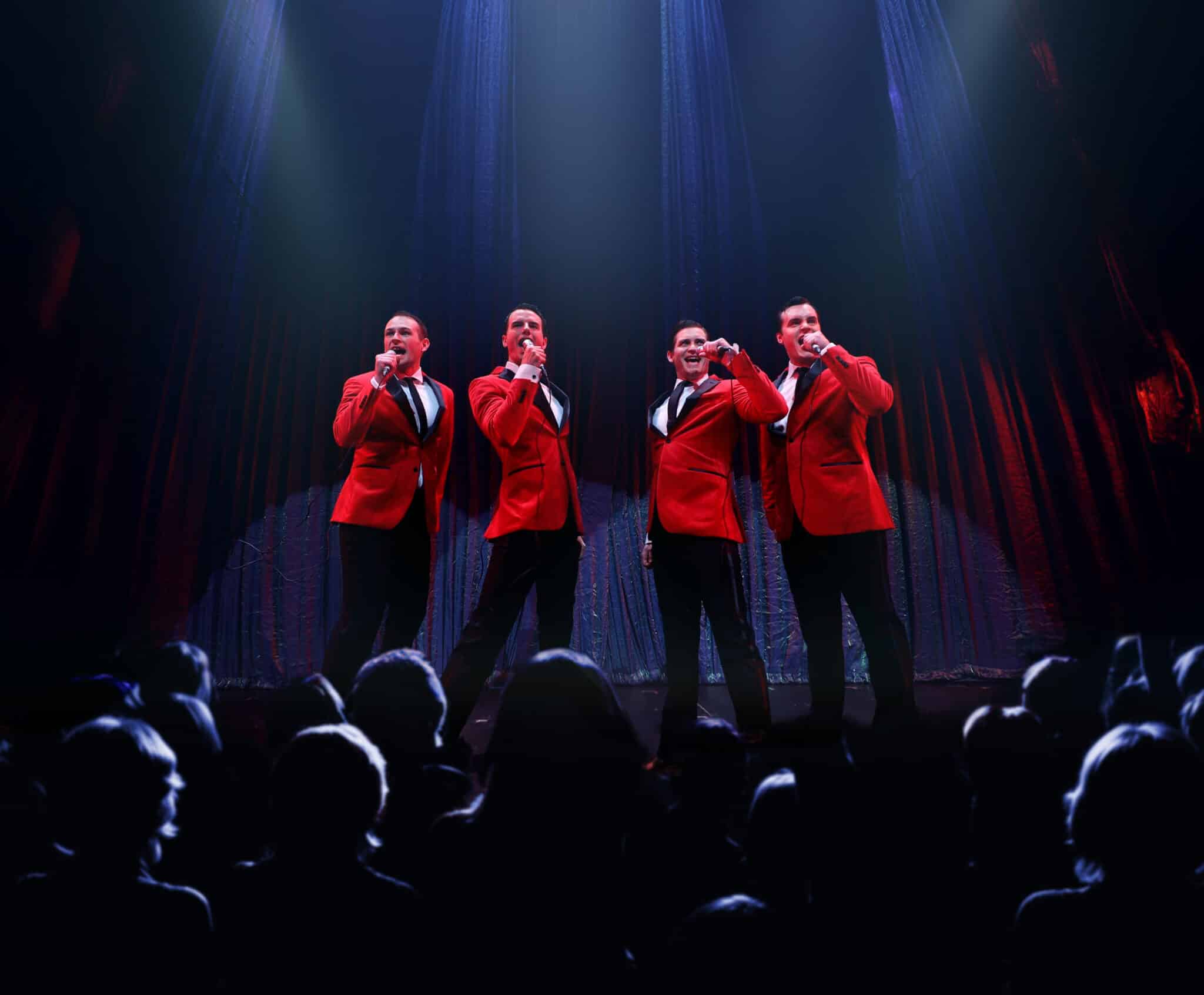
The megahit musical Jersey Boys makes its regional premiere in City Springs Theatre Company’s (CSTC) first-ever, five-week run at the Byers Theatre in Sandy Springs.
Directed by Atlanta’s-own Shane DeLancey, and choreographed by Meg Gillentine, Jersey Boys tells the rags-to-riches story of Frankie Valli and The Four Seasons. The show details their remarkable journey from the streets to the top of the charts, to their 1990 induction into the Rock and Roll Hall of Fame.
Leading the cast of Jersey Boys is Haden Rider as Frankie Valli. Rider is a City Springs Theatre Company veteran, with recent roles in both Legally Blonde (Emmett) and Fiddler on the Roof (Perchik).
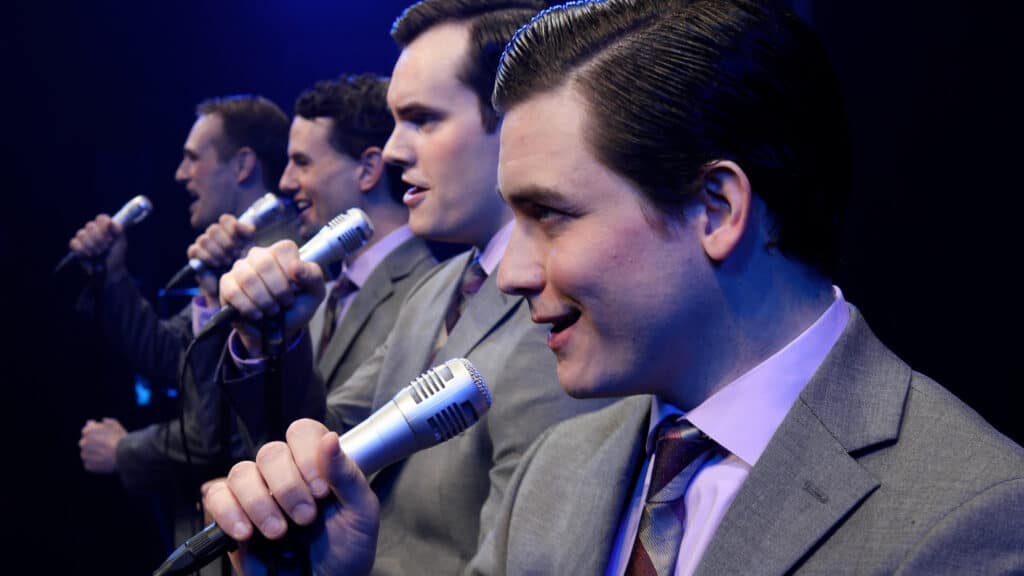
Presented by Resurgens Spine Center, Jersey Boys runs from July 12 through August 11, and shines a special spotlight on home-grown talent, as the show’s four leading men are all Atlanta-area residents.
With phenomenal music, memorable characters and great storytelling, Jersey Boys follows the fascinating evolution of four blue-collar kids who became one of the greatest successes in pop-music history.
“City Springs Theatre Company is very proud to be the first in the southeast region to present Jersey Boys,” said CSTC Artistic Director and Tony Award-winner Shuler Hensley. “Our audiences have been asking for this particular show since we opened. The production is truly stacked with talent onstage and off, and we’re pulling out all the stops to bring audiences an experience that will rival any previous version of the show.”
Jersey Boys premiered at the La Jolla Playhouse in 2005, prior to its 13-year Broadway run, from 2005 to 2017. There have been productions of the show in Las Vegas, UK/Ireland, Toronto, Melbourne, Singapore, South Africa, the Netherlands, Japan, Dubai and China.
Jersey Boys features a book by Marshall Brickman and Rick Elice, with music by Bob Gaudio, and lyrics by Bob Crewe.
Individual tickets to see Jersey Boys are on sale now ($42 – $108), with discounts for seniors, students, groups and active and retired military personnel.
CSTC’s Box Office is open Monday through Friday from 10:00 a.m. – 5:00 p.m.
Call 404-477-4365 or visit CitySpringsTheatre.com for more information.
This production contains adult language and is recommended for mature audiences.
Performance schedule:
Friday, July 12 | 8:00 p.m.
Saturday, July 13 | 2:00 p.m. & 8:00 p.m.
Sunday, July 14 | 2:00 p.m. & 7:30 p.m.
Tuesday, July 16 | 7:30 p.m.
Wednesday, July 17 | 7:30 p.m.
Thursday, July 18 | 8:00 p.m.
Friday, July 19 | 8:00 p.m.
Saturday, July 20 | 2:00 p.m. & 8:00 p.m.
Sunday, July 21 | 2:00 p.m. & 7:30 p.m.
Tuesday, July 23 | 7:30 p.m.
Wednesday, July 24 | 7:30 p.m.
Thursday, July 25 | 8:00 p.m.
Friday, July 26 | 8:00 p.m.
Saturday, July 27 | 2:00 p.m. & 8:00 p.m.
Sunday, July 28 | 2:00 p.m. & 7:30 p.m.
Tuesday, July 30 | 7:30 p.m.
Wednesday, July 31 | 7:30 p.m.
Thursday, August 1 | 8:00 p.m.
Friday, August 2 | 8:00 p.m.
Saturday, August 3 | 2:00 p.m. & 8:00 p.m.
Sunday, August 4 | 2:00 p.m. & 7:30 p.m.
Tuesday, August 6 | 7:30 p.m.
Wednesday, August 7 | 7:30 p.m.
Thursday, August 8 | 8:00 p.m.
Friday, August 9 | 8:00 p.m.
Saturday, August 10 | 2:00 p.m. & 8:00 p.m.
Sunday, August 11 | 2:00 p.m. & 7:30 p.m.
Related
Arts & Literature
Local Students Show Off Their Artistic Creations
Published
2 months agoon
June 2, 2024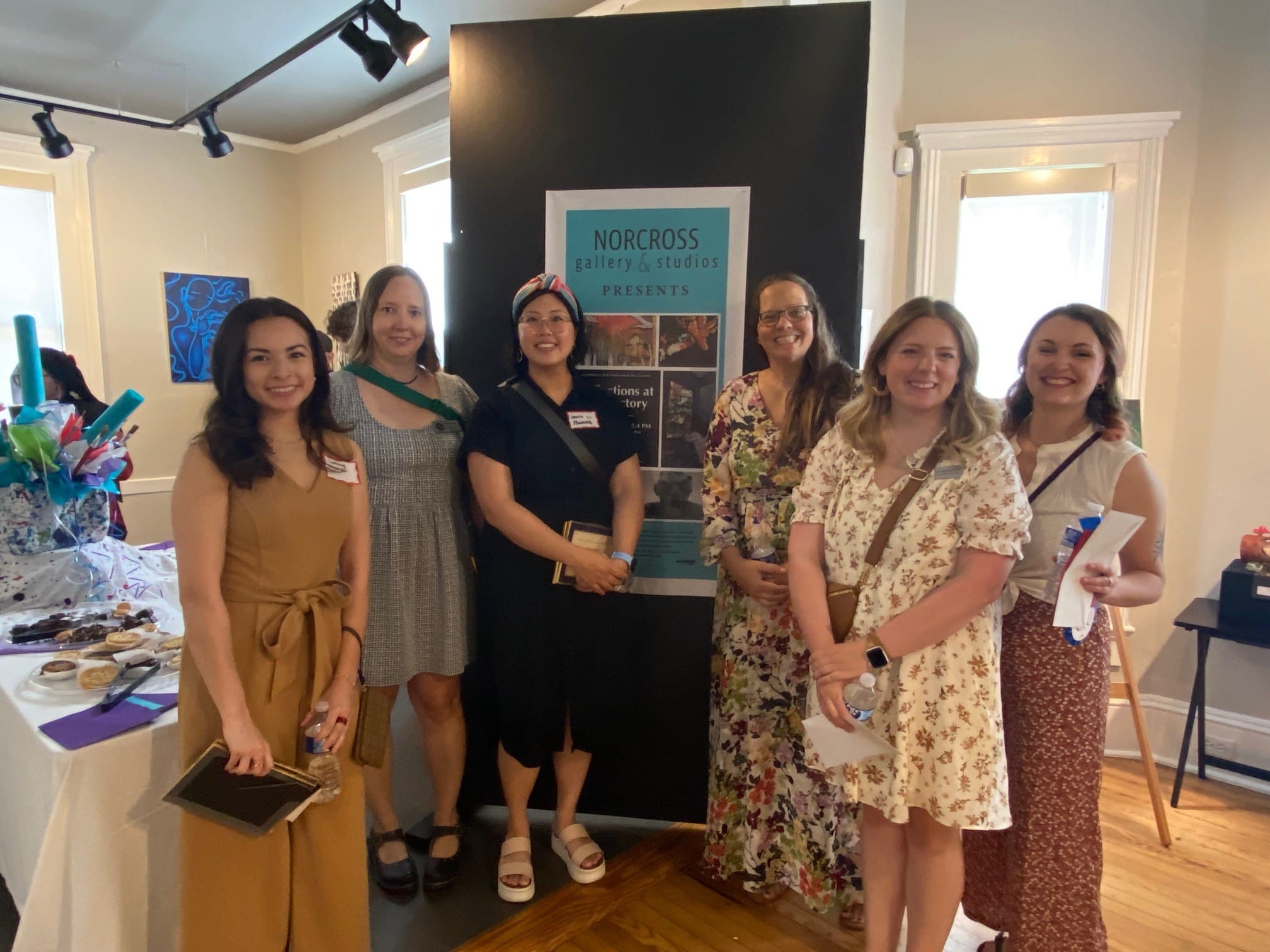
From May 11 through May 18, the Norcross Gallery & Studios kicked off a fantastic exhibition, Reflections at Rectory, which showcased the works of 36 rising stars: AP and IB art students from our local high schools.
The opening reception celebrated their creativity and dedication. Gallery director Anne Hall presented a dozen awards generously sponsored by the community, a testament to the local support for these young artists.
One prestigious award, the Terri Enfield Memorial Award, holds special significance.
Established by Terri’s daughters, it recognizes not just artistic excellence, but also leadership, work ethic and the spirit of collaboration. Last year’s winner, Aidan Ventimiglia, even played a part in selecting this year’s recipient Jasmine Rodriguez.
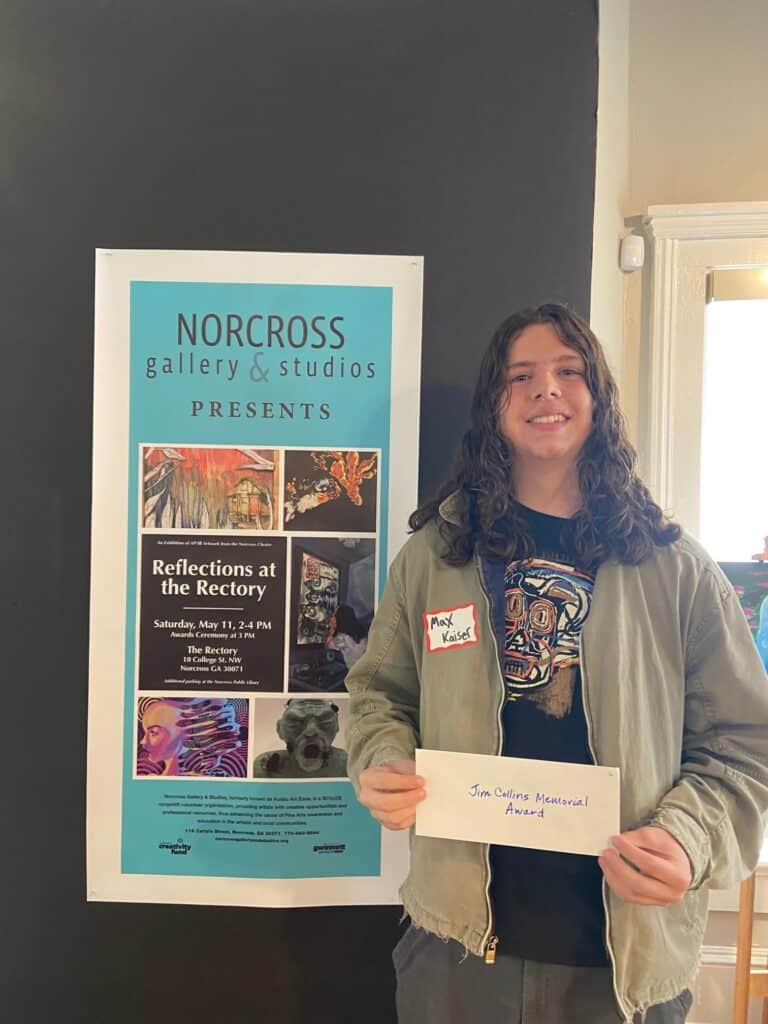
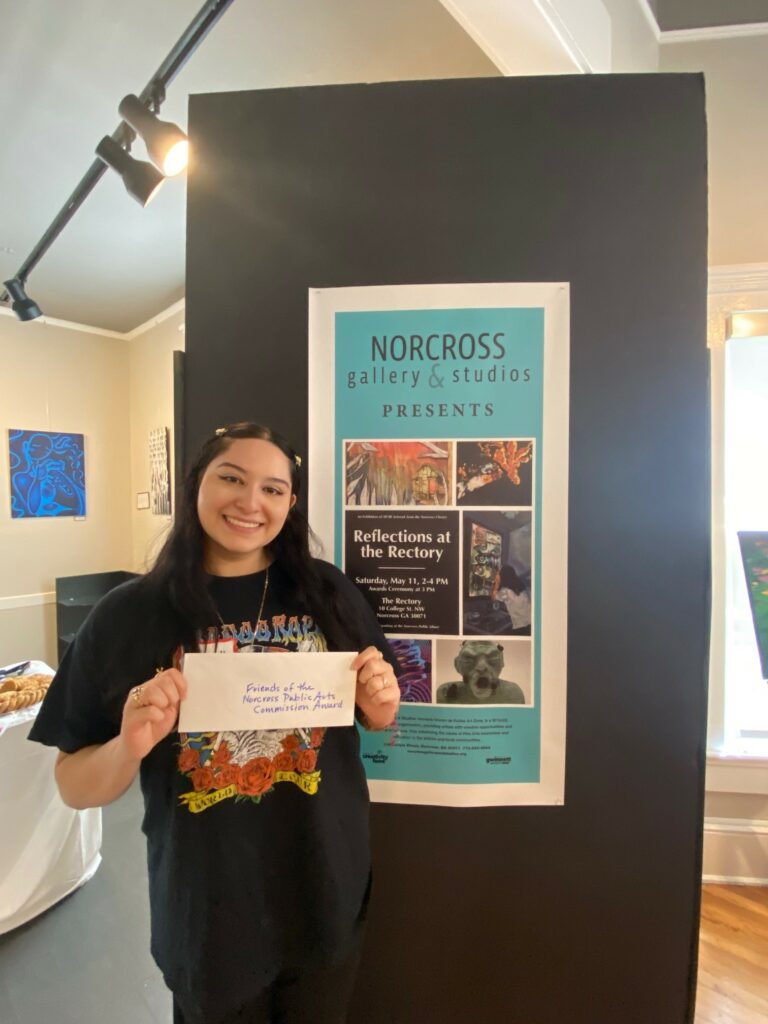
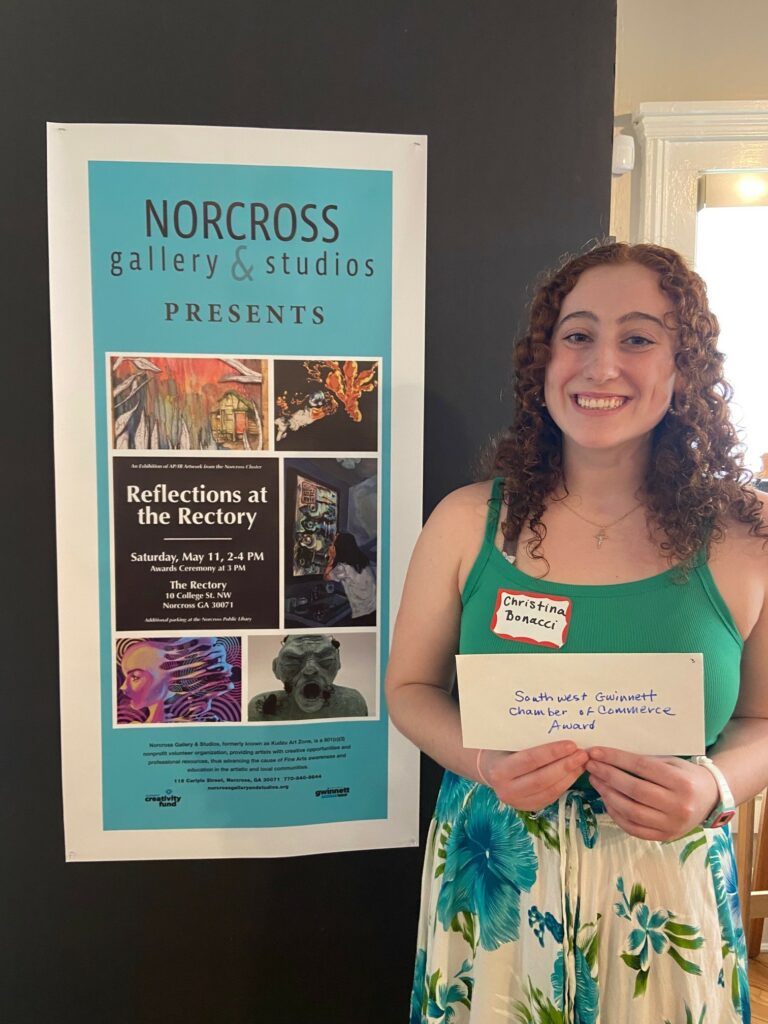
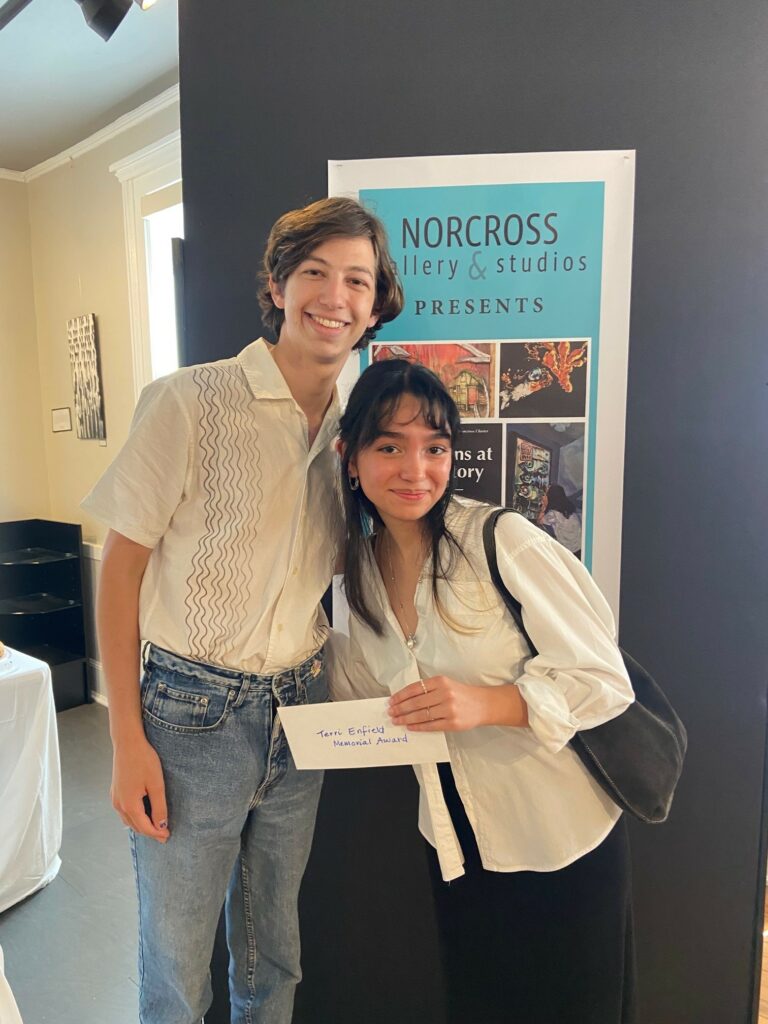
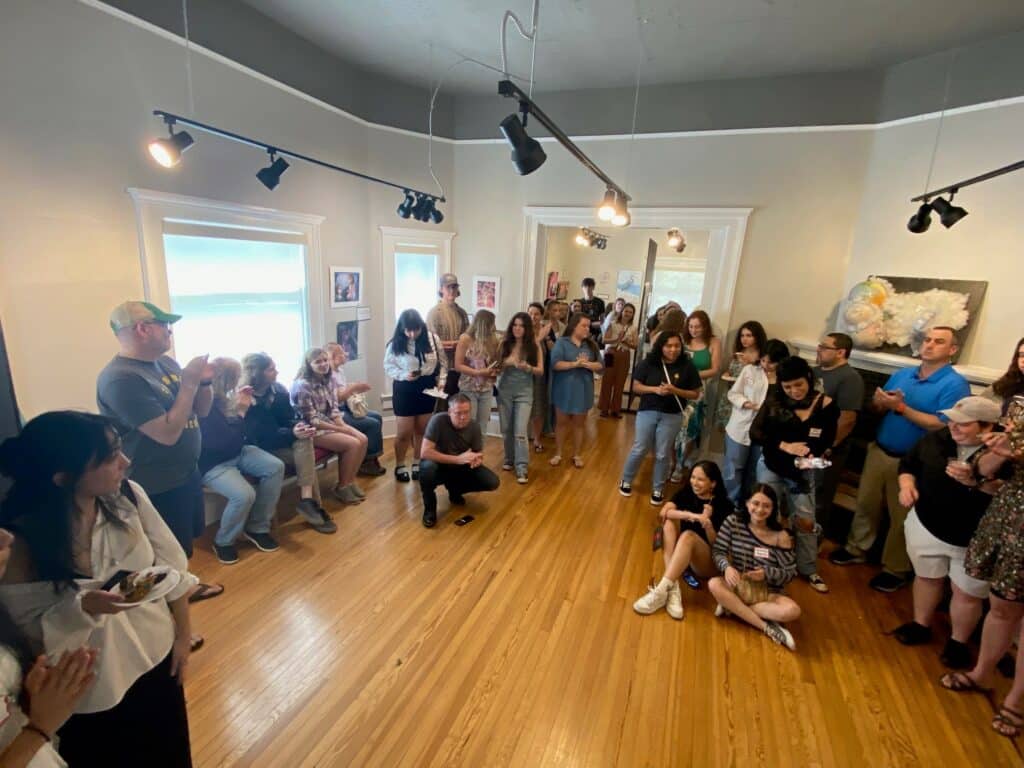
Congratulations to all the student artists.
Students in the second annual Reflections at the Rectory exhibit
Norcross High School:
- Gustavo Benumea-Sanchez
- Maycol Cruz Padilla
- Dorie Liu
- Harlet Martinez Castro
- Paulina Santana
- Gisela Rojas Medina
- Clare Fass
- Ava Netherton
- Ubaldo Diaz
- Katia Navas-Juarez
- Mariah Ingram
- Arisdelcy Juan
- Max Kaiser
- Dani Olaechea
- Christina Bonacci
- Diana Ortiz Ventura
- Katie Yerbabuena-Padierna
Paul Duke High School:
- Adamu Abdul-Latif
- Salma Noor Alabdouni
- Samrin Zaman
- Camryn Vinson
- Liz Damian
- Cecelia Berenguer
- Jasmine Rodriguez
- Angelina Bae
- Dahyana Perez
- Jonah Swerdlow
- Kyra Allicock
- Anni Brown
- Kaleb Fields
- Destiny Jones
- Gabriela Leal-Argueta
- Madisyn Mathis
- Ashley McDonough
- Ahtziri Pinones
- Alondra Valiente-Torres
Related
Arts & Literature
Book, TV and Podcast Recommendations for this Summer
Published
2 months agoon
June 2, 2024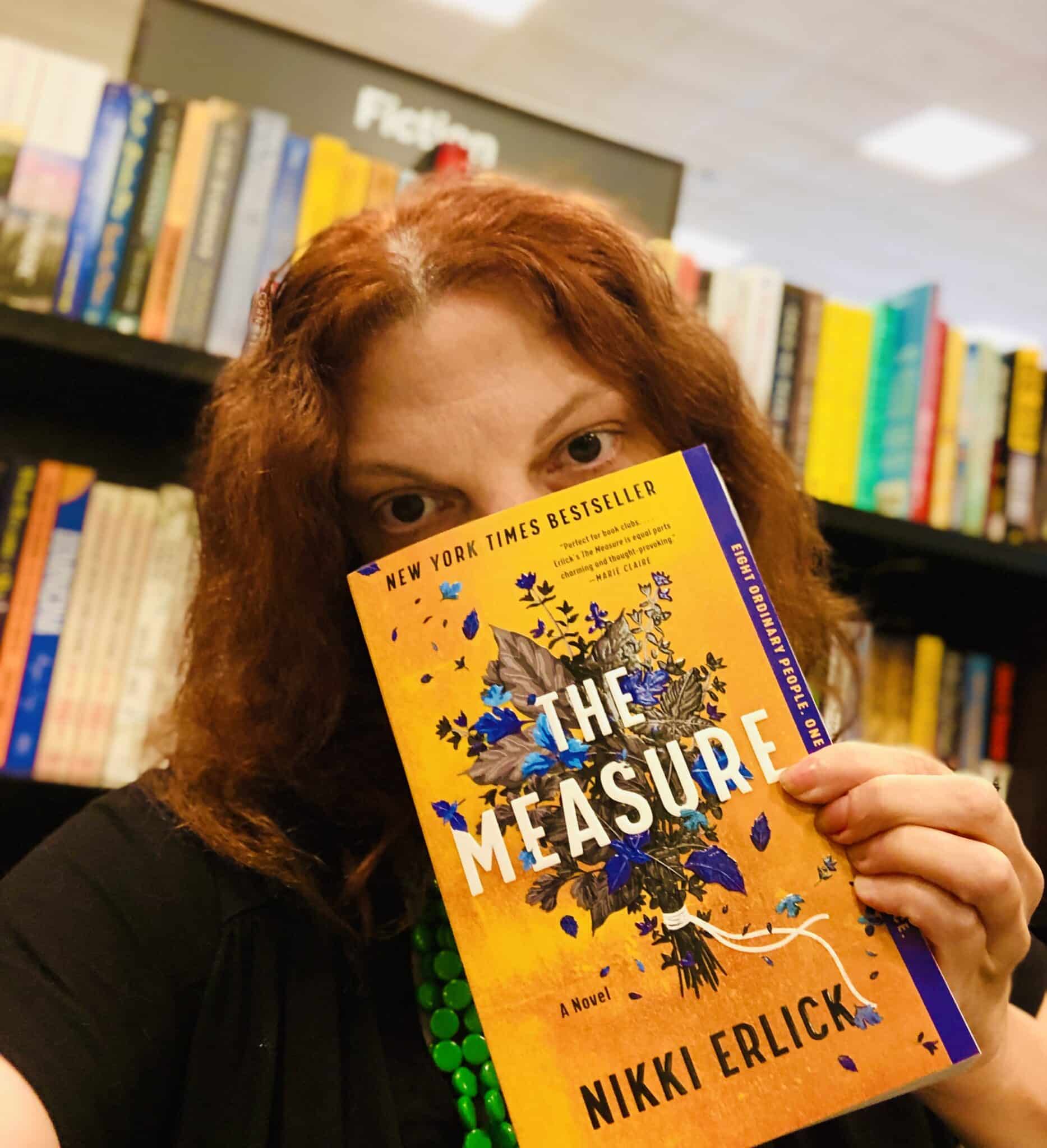
Beat the heat this Summer with a good book, show or podcast. This year, Peachtree Corners Magazine received over 30 recommendations from more than a dozen city residents. There is something for everyone on this list, so let’s dive in.
Machine Made: Tammany Hall and the Creation of Modern American Politics
by Terry Golway
This 400-page book offers readers a comprehensive and insightful exploration of one of the most influential political machines in American history. It provides valuable lessons and perspectives on the intersection of politics, power and society.
Turning Point: The Bomb and the Cold War
Stream on Netflix
This nine-part series offers viewers a thought-provoking exploration of one of the most consequential periods in modern history. It provides deep insights into the complexities of nuclear politics and the enduring legacy of the Cold War.
Fareed Zakaria GPS
Listen on CNN Audio
This podcast comprehensively examines foreign affairs. It enhances a listener’s global awareness, fosters critical thinking and sheds light on complex issues shaping our world today.
— Brian Johnson, City Manager for Peachtree Corners
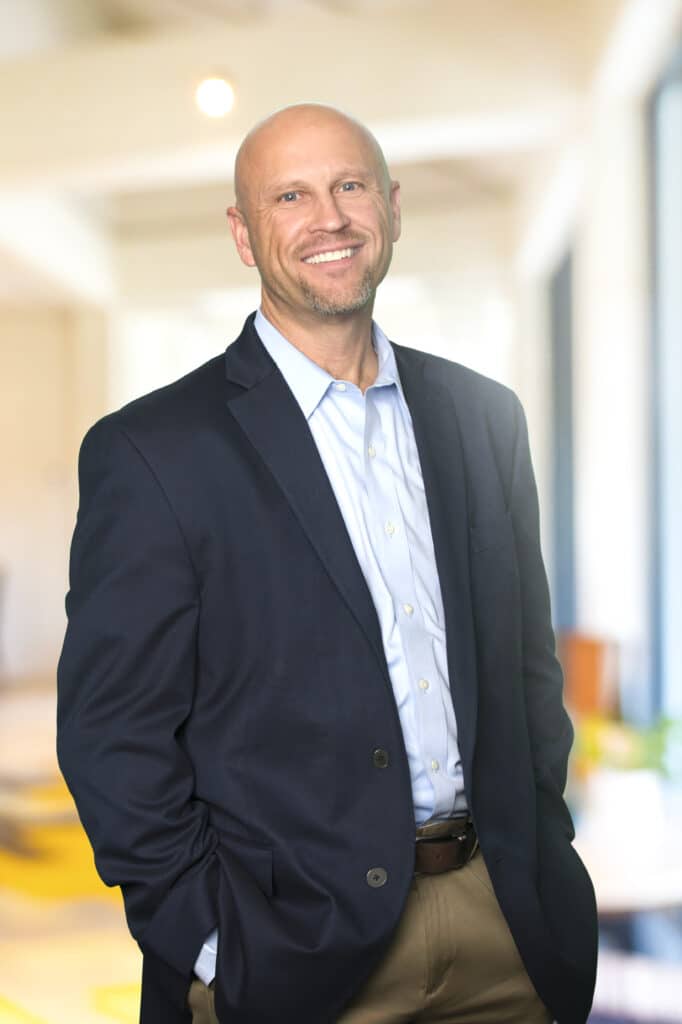
Empowering Nurses Through Self-care: Unleashing Your Potential and Thriving in the Nursing Profession
by Audrey Boyce
Audrey Boyce offers a practical guide to help nurses find balance and fulfillment in their personal lives and professions. With a comprehensive overview of self-care strategies, this book is essential for nurses looking to recharge, reduce stress and increase job satisfaction.
The Go-Giver, Expanded Edition: A Little Story About a Powerful Business Idea by Bob Burg and John David Mann
The Go-Giver tells the story of Joe, an ambitious young man striving for success. Through Joe’s journey, this book imparts powerful lessons about the significance of giving, collaboration and building meaningful relationships in achieving success.
Special Ops: Lioness
Stream on Paramount+
The protagonist, Joe, attempts to balance her personal and professional life as the tip of the CIA’s spear in the war on terror. The Lioness Program enlists Cruz to operate undercover alongside Joe among the power brokers of State terrorism.
Money and Wealth
Listen on Apple Podcasts
In Money and Wealth, John Hope Bryant provides valuable insights into financial literacy and wealth-building strategies. With a clear and accessible approach, Bryant aims to empower listeners with practical knowledge to achieve financial stability and success.
— Bobby Cobb, CEO of Cobb Global Outreach Inc.
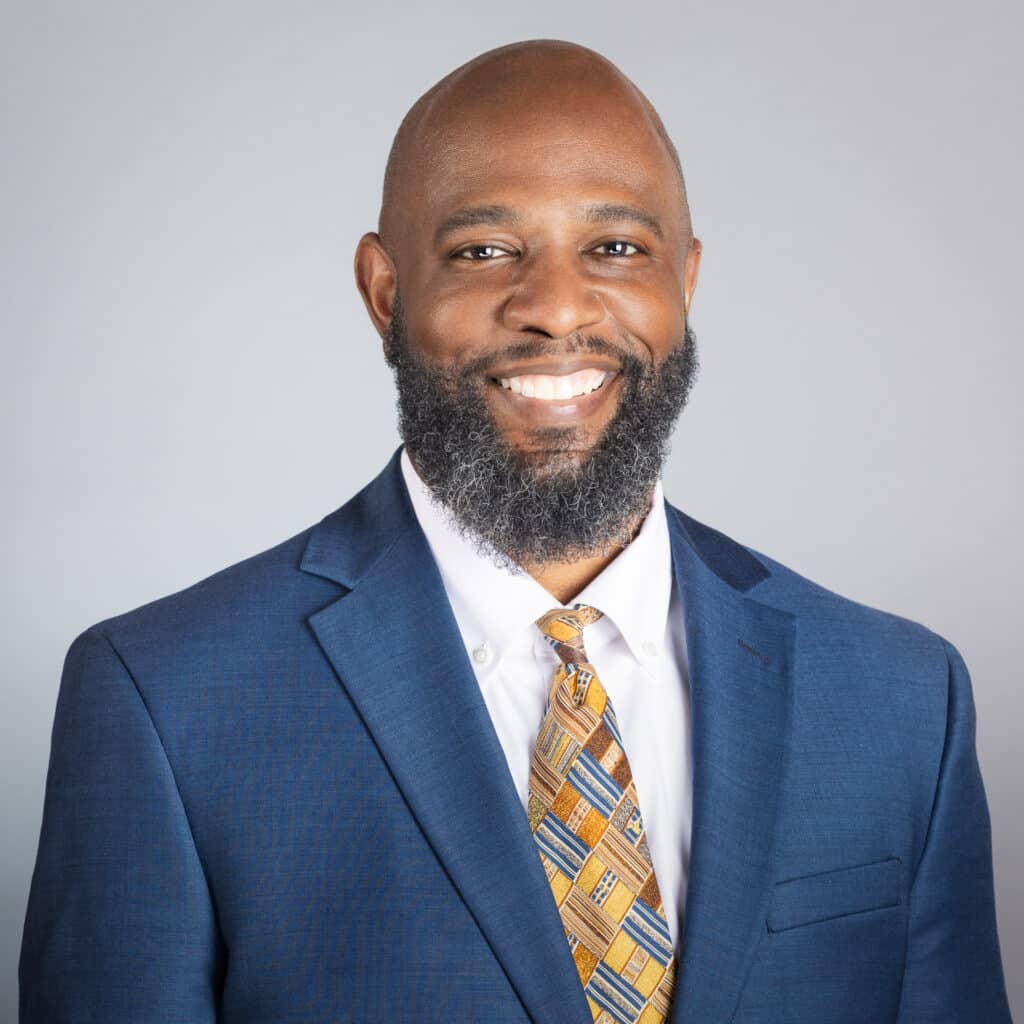
1984
by George Orwell
The new audio drama of George Orwell’s 1984 on Audible is nothing short of phenomenal. With a full cast of film stars and sound effects in stereo, you’ll feel like you’re actually in Oceania, being watched by Big Brother.
— Jill Tew, local author of the forthcoming young adult dystopian novel The Dividing Sky
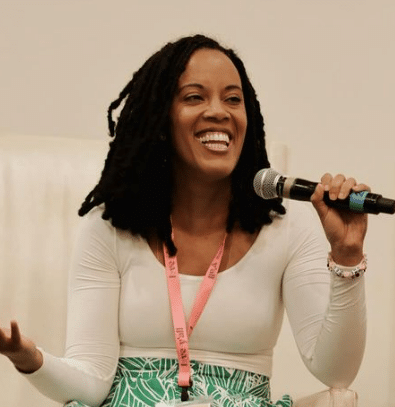
Enter Ghost
by Isabella Hammad
I recently read this and loved the writing. The author plays around with formatting between narrating the story and switching to the format of a play to show the dynamics between characters.
— Ruwa Romman, Georgia State Representative
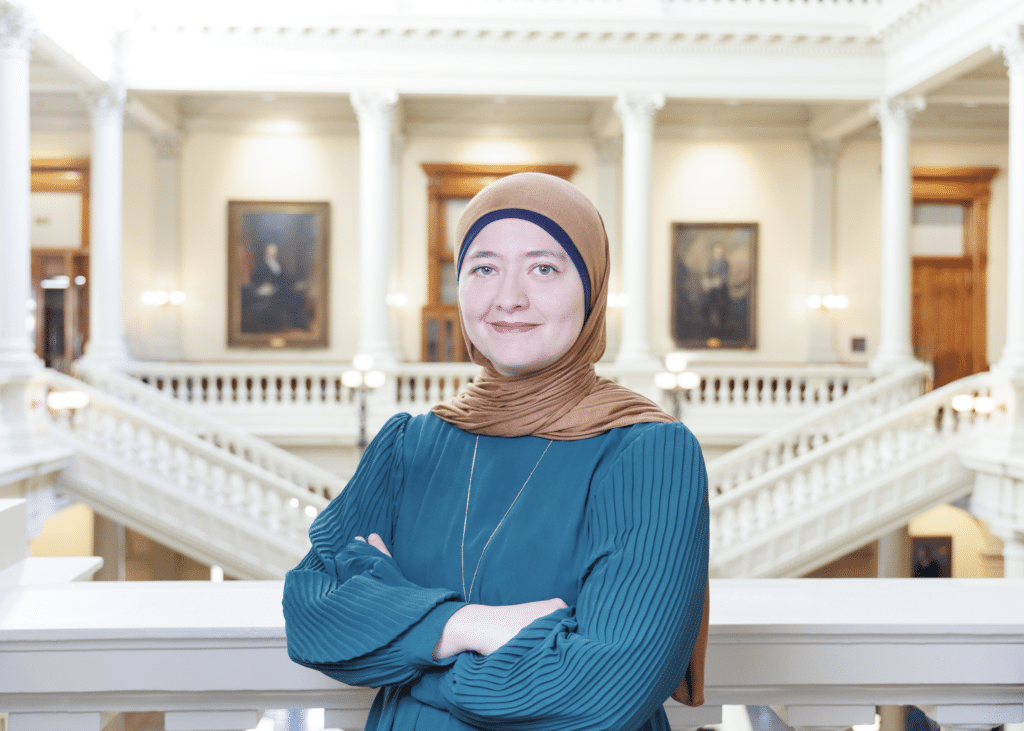
Seeing Eye Girl
by Beverly Armento
Beverly Armento’s account of her life in Seeing Eye Girl is truly remarkable. I was captivated by her story of resilience, strength and, ultimately, forgiveness.
— Erin Griffin, Norcross High School Foundation for Excellence Co-President
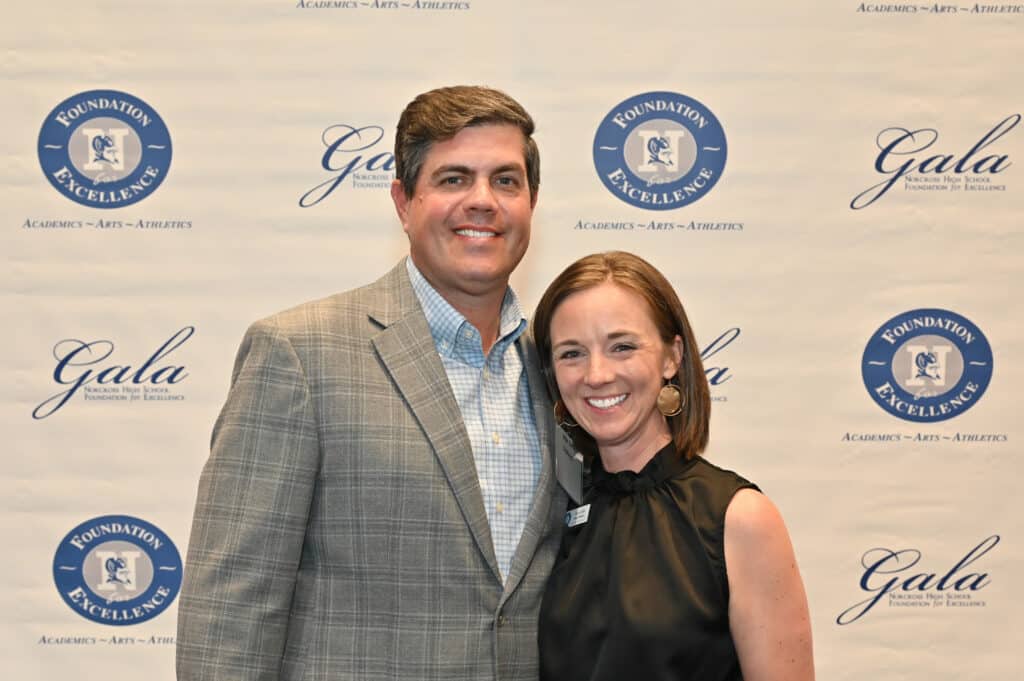
Never Enough: When Achievement Pressure Becomes Toxic – And What We Can Do About It
by Jennifer B. Wallace
This book presents research on how to raise healthy, joyful achievers in a hyper-competitive world. The author was a guest speaker at Greater Atlanta Christian’s (GAC) Parent Partnership Series this year, and we heard about the importance of children knowing that their intrinsic self-worth is not contingent solely upon external achievements.
The Anxious Generation
by Jonathan Haidt
Discover the root causes behind the epidemic of today’s teen mental illness. With compelling data, Jonathan Haidt unveils the decline of play-based childhood and offers practical solutions for a healthier, more fulfilling upbringing. We have asked GAC faculty to add this to their personal summer reading list.
— Dr. Scott Harsh, President of Greater Atlanta Christian School
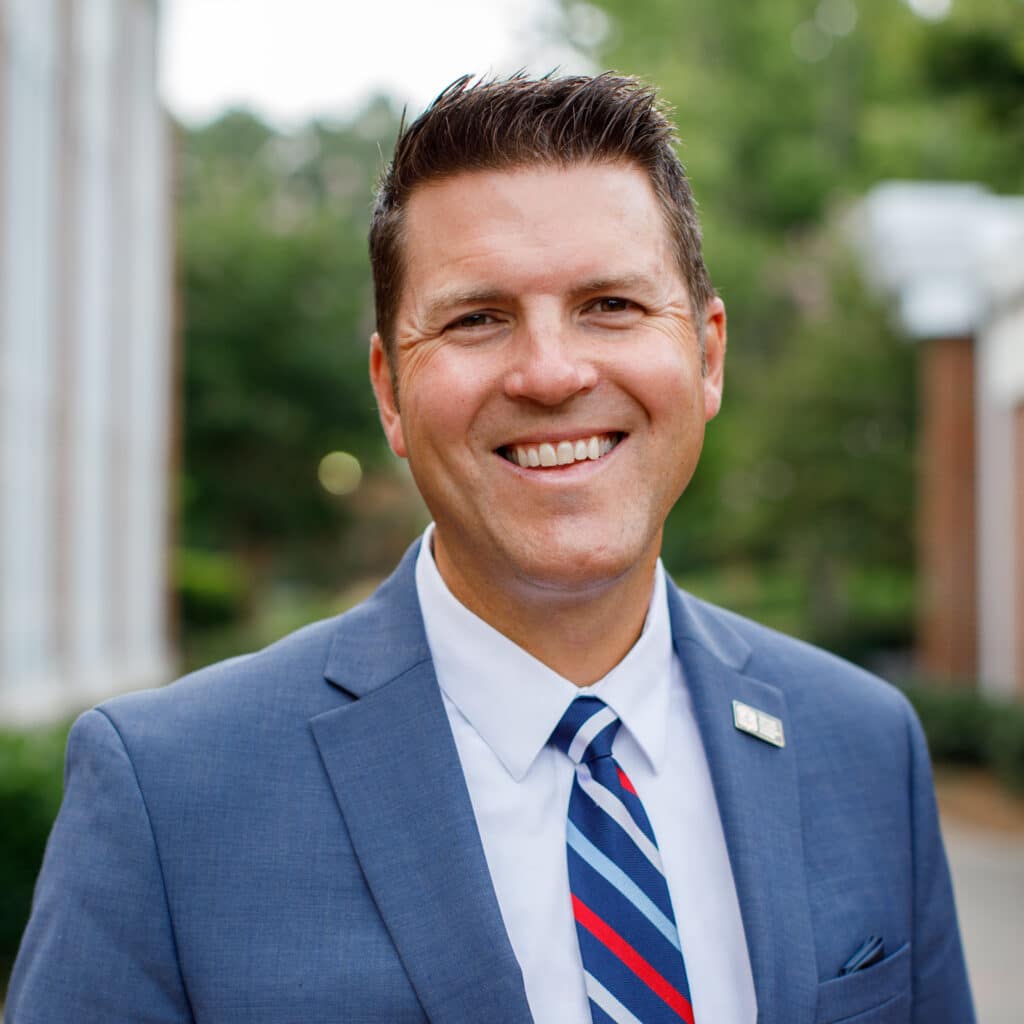
Glad You’re Here
by Craig Cooper and Walker Hayes
Glad You’re Here tells the true, redemptive story of country music singer Walker Hayes and his unlikely friendship with pastor Craig Cooper. In alternating chapters, each individual shares their unique perspective on pivotal moments in their friendship, and the book reminded me to prioritize the patient and persistent cultivation of community.
— Ann Cousins, Communications Director and Wesleyan School
The Boredom Experiment
Listen on Apple Podcasts
The Boredom Experiment, hosted by Jeremy and Ashley Parsons, is a short, heartfelt podcast series that documents and explores the effect of removing digital distractions and social media from their family’s lives for a year.
Over eight episodes, they share their experiences and insights into how this experiment impacts their creativity, relationships and overall well-being. The Parson’s storytelling thoughtfully weaves together interviews, music and their musings in such a creative, personal way that makes it an absolute delight to listen to.
The 1000 Hours Outside Podcast
Listen on Apple Podcasts, Spotify and Youtube
Digital Minimalism
by Cal Newport
Digital Minimalism advocates for a thoughtful and intentional approach to technology use. Newport argues that constant connectivity and digital distractions hinder productivity and well-being and encourages individuals to choose tools and habits that align with their values and long-term goals. In a digitally crowded world, this book was a needed reminder to be intentional with my time and strategic with how I use technology.
— Natalie Dettman, Creative Director at Wesleyan School
Sideline C.E.O.
by Marty Smith
While on this surface this book offers great wisdom from some of the most successful coaches of our time, it also provides a behind-the-scenes look at the lives of many people we admire.
From learning about Greg Sankey figuring out how to lead the SEC through Covid as he sat on his front porch to Mack Brown processing through how to lead his football team through racial tensions at UNC, you realize that these men [and women] are normal human beings that face the same difficult choices as the rest of us.
Not to mention, Marty Smith captures the lives and insight of these coaches in a fun, compelling way!
Practicing the Way
by John Mark Comer
New Kid
by Jerry Craft
Where Do We Go from Here
by Martin Luther King Jr.
— Joseph Antonio, Middle School Principal at Wesleyan School
West with Giraffes
by Linda Rutledge
This is lightly based on a true story. It is the story of moving giraffes who survived a hurricane, were rescued in the Atlantic, and were carried cross-country to the San Diego Zoo. It is well-written, and the character development is fantastic.
Crossing the country with two giraffes during the Depression created excitement in all the small struggling areas. The joy of those who had never dreamed of seeing a giraffe in real life will bring joy to anyone reading this book.
Housewives of True Crime
Listen on Apple Podcasts and Youtube
Moms and Mysteries
Listen on Apple Podcasts, iHeart Radio and Spotify
Southern Fried Crime
Listen on Apple Podcasts and Youtube
Wiser than Me with Julia Louis-Dreyfus
Listen wherever you get your podcasts
— Nancy Minor, The Nancy Minor Team
The Women
by Kristen Hannah.
A great read about the Army nurses in Vietnam.
— Laurie Rogers, The Nancy Minor Team
In The Woods
by Tana French
This book is a real page-turner. The author is a gifted writer, so even though it is a crime thriller, it reads like a novel. There are six books in the series, and I have read all of them.
Casefiles
Listen on Apple Podcasts and Spotify
This is a true crime podcast that has been around for several years. The stories are detailed and very interesting and cases are examined from all over the world.
— Shameka Allen, MBA, MA, CEO of Good Samaritan Health Centers of Gwinnett
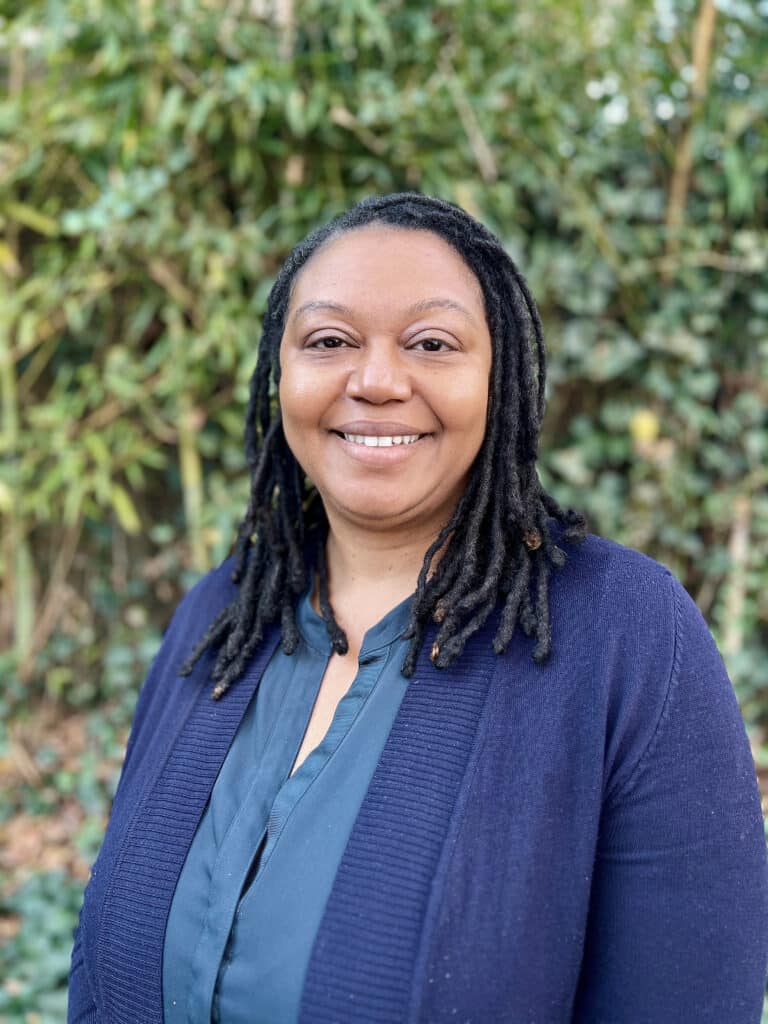
Over the Edge of the World
by Laurence Bergreen
Over the Edge of the World is a captivating account of Magellan’s expedition around the world. We all know Magellan’s name but few of us know the rich details behind the adventure and how it unfolded. I was inspired by the courage and bravery of those who took part in the great Age of Exploration.
Arrested Development
Stream on Netflix
This is easily one of our favorite shows. My wife, Meredith, and I have watched and re-watched it so many times and still find it so hilariously funny. The show blends clever writing with quirky characters and intricate, running gags. There’s always money in the Banana Stand!
Dr. Death
Listen on Apple Podcasts, Spotify and Wondery
This gripping true-crime podcast explores the shocking story of a dangerous surgeon. It’s a must-listen for its compelling narrative, deep investigative journalism and critical insights into medical malpractice and systemic failures. The podcast has since been made into a limited streaming TV series.
— Scott Hilton, Georgia State Representative
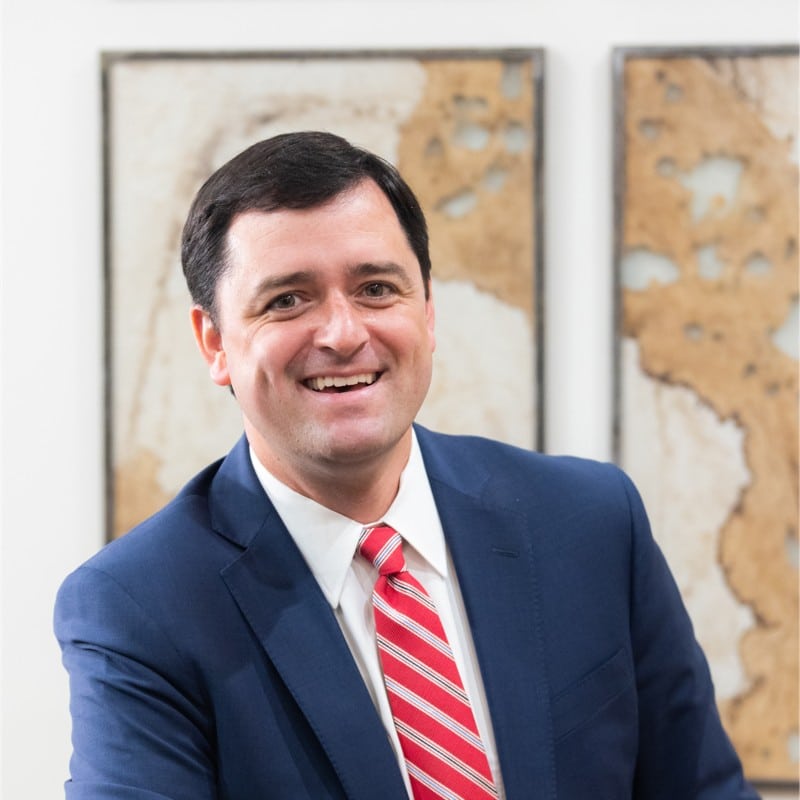
Sleep Wrecked Kids
by Sharon Moore
This book explains how inadequate sleep affects children’s growth, development and learning. This is a great guide to creating better sleep routines.
Healthy Sleep Happy Kid
by Meghna Dassani
This quick, easy read offers valuable insights into how sleep impacts a child’s health. It provides practical tips for improving your child’s sleep environment and habits and is a go-to resource for parents aiming to enhance their child’s sleep and overall wellness.
I can’t overstate the importance of good sleep habits for the overall well-being of your child and the entire household. Quality sleep is the foundation for happy, healthy kids and stress-free parents, setting the stage for the best possible summer with your family.
— Dr. Gia Grannum, Board Certified Pediatric Dentist of Agape Pediatric Dentistry
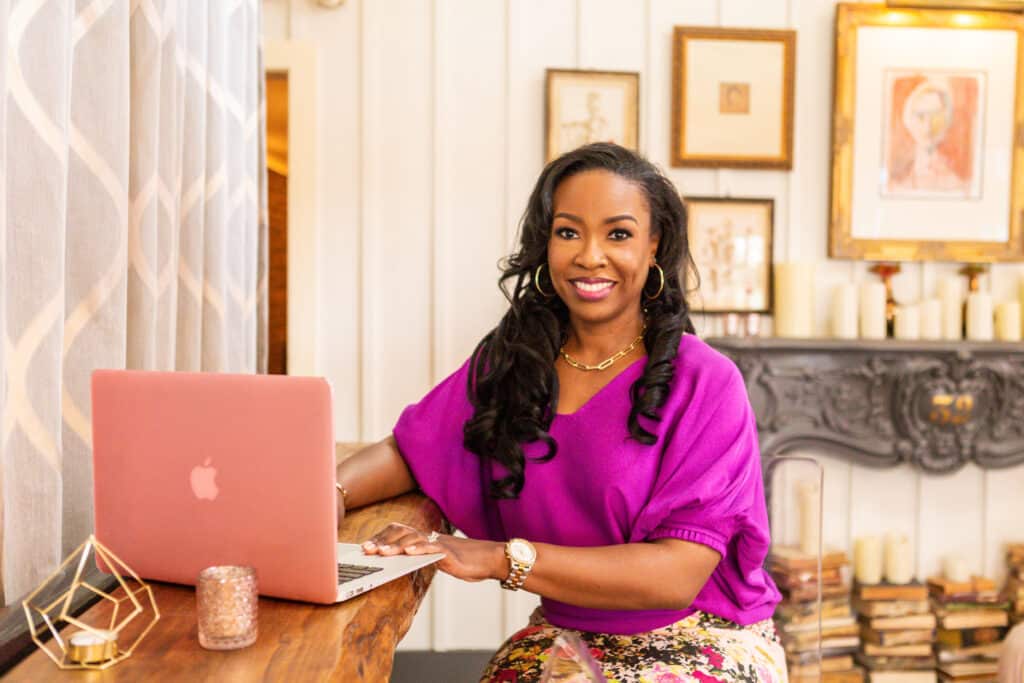
The Measure
by Nikki Erlick
I recommend The Measure by Nikki Erlick, which is about to come out in paperback! It’s a great pick for summer reading or a book club!
Poured Over, the Barnes & Noble Podcast
Stream on the Barnes & Noble website and Apple Podcasts
Check out the Poured Over podcast for interviews with your favorite authors, book recommendations for your TBR pile and more.
— Amanda Couch, Assistant Manager at Barnes & Noble at The Forum
Want even more recommendations? Check out last year’s list here.
Related
Read the Digital Edition
Subscribe
Keep Up With Peachtree Corners News
Join our mailing list to receive the latest news and updates from our team.
You have Successfully Subscribed!

Taste of Peachtree Corners: PCBA Showcases Local Restaurants

What’s going on at Jones Bridge Park and the Challenges of Urban Development

The Forum Gives Sneak Peek of New Eateries and Community Spaces

Southwest Gwinnett Mayors Share Visions for the Future

Peachtree Corners Shines Bright with Light Up the Corners Glow Race this August

8 Events Happening In and Around Peachtree Corners This August

Peachtree Corners Shines Bright with Light Up the Corners Glow Race this August

The Forum Gives Sneak Peek of New Eateries and Community Spaces

8 Events Happening In and Around Peachtree Corners This August

Southwest Gwinnett Mayors Share Visions for the Future

Taste of Peachtree Corners: PCBA Showcases Local Restaurants

What’s going on at Jones Bridge Park and the Challenges of Urban Development

Local Resident Opens AtWork Location in Peachtree Corners

CHRIS 180 Expands its Services into Gwinnett County [Podcast]

Light up the Corners [Video]

Capitalist Sage: Business Leadership in Your Community [Podcast]

Cliff Bramble: A Culinary Adventure through Italy

Top 10 Brunch Places in Gwinnett County

A Hunger for Hospitality

THE CORNERS EPISODE 3 – BLAXICAN PART 1

Top 10 Indoor Things To Do This Winter

The ED Hour: What it takes to Remove Barriers from Education
Peachtree Corners Life
Topics and Categories
Trending
-
Business1 week ago
Taste of Peachtree Corners: PCBA Showcases Local Restaurants
-
Business2 days ago
The Forum Gives Sneak Peek of New Eateries and Community Spaces
-
City Government4 days ago
Southwest Gwinnett Mayors Share Visions for the Future
-
Community2 days ago
Peachtree Corners Shines Bright with Light Up the Corners Glow Race this August



